Post by kerouac on May 26, 2011 14:38:55 GMT -5
Paris didn't always have an African neighbourhood. 50 years ago, most of the Africans were workers living in housing supplied by their employers. Often these were prefab barrack type buildings out in the suburbs. However, as the years went by and a lot of them preferred to settle permanently in France, the families arrived and it wasn't possible to live in barracks anymore.
The area around the Château Rouge metro station already had plenty of immigrants and was cheap. There were several other areas that could have been chosen for another specific ethnic neighbourhood to form, but this sort of thing tends to happen by accident.
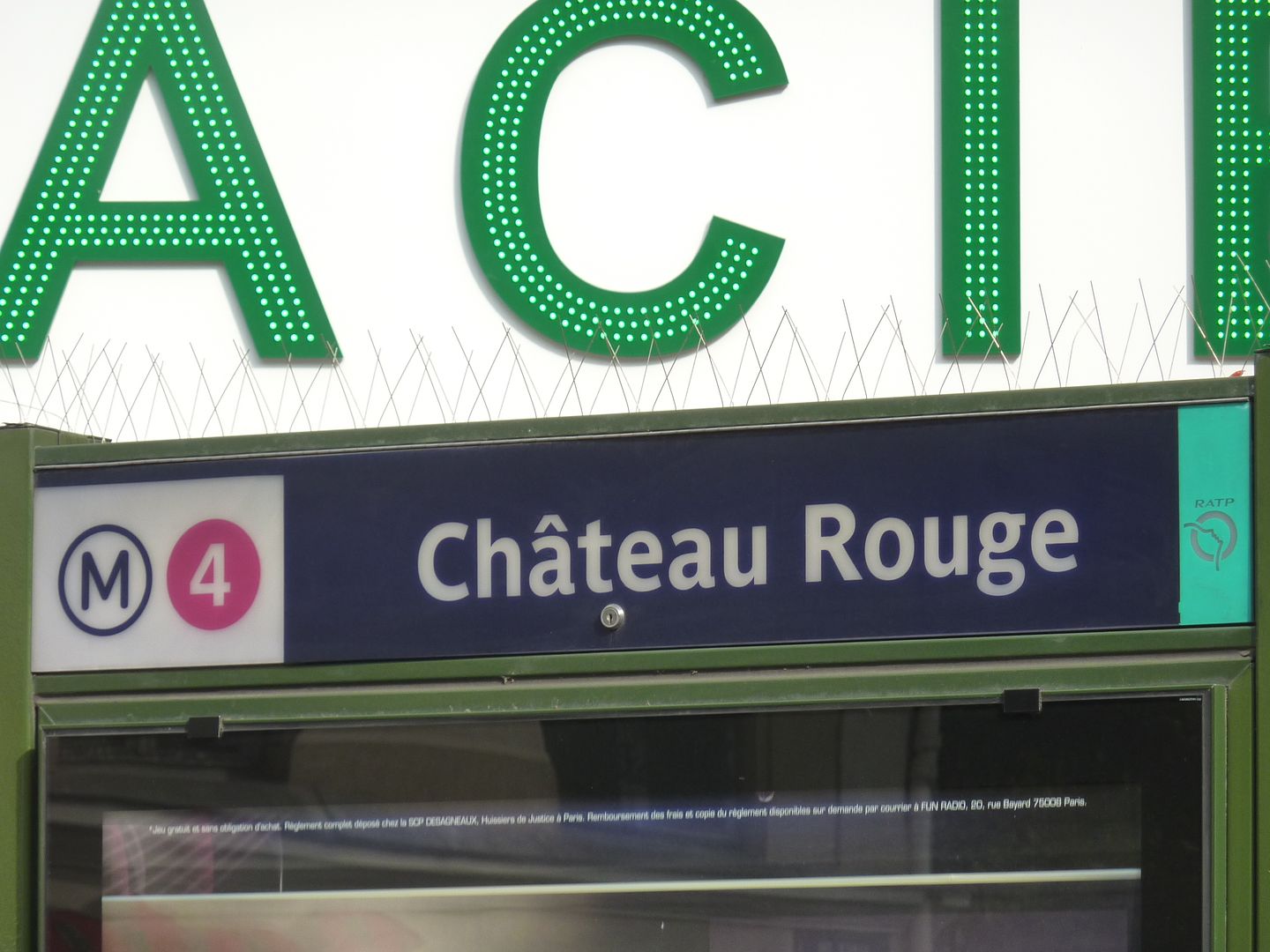
The core of any such neighbourhood is the food. The market street right at the metro exit is rue Dejean, and it has become a typical African market, even though there are still a few European merchants there. Business is good for everybody.


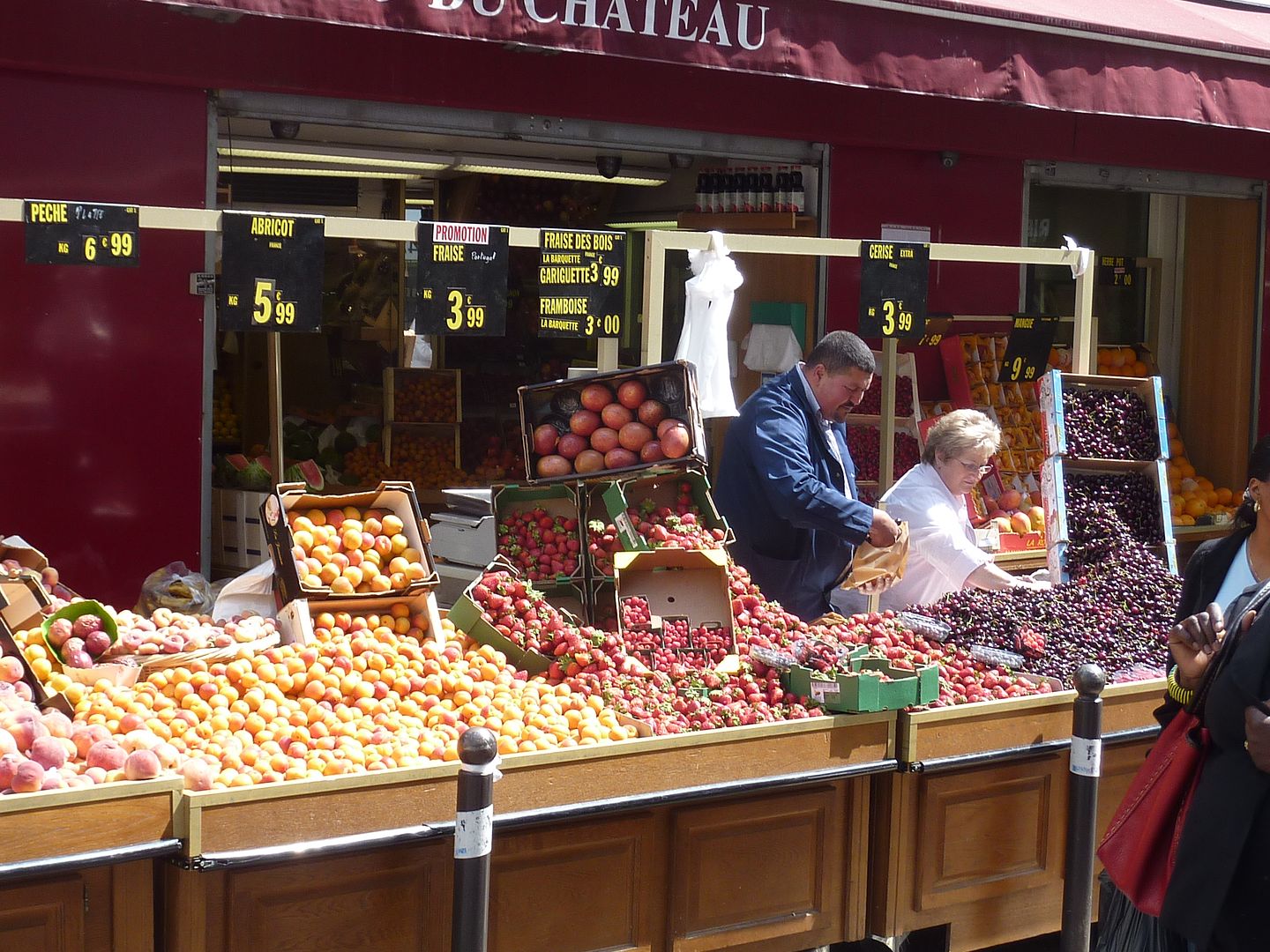
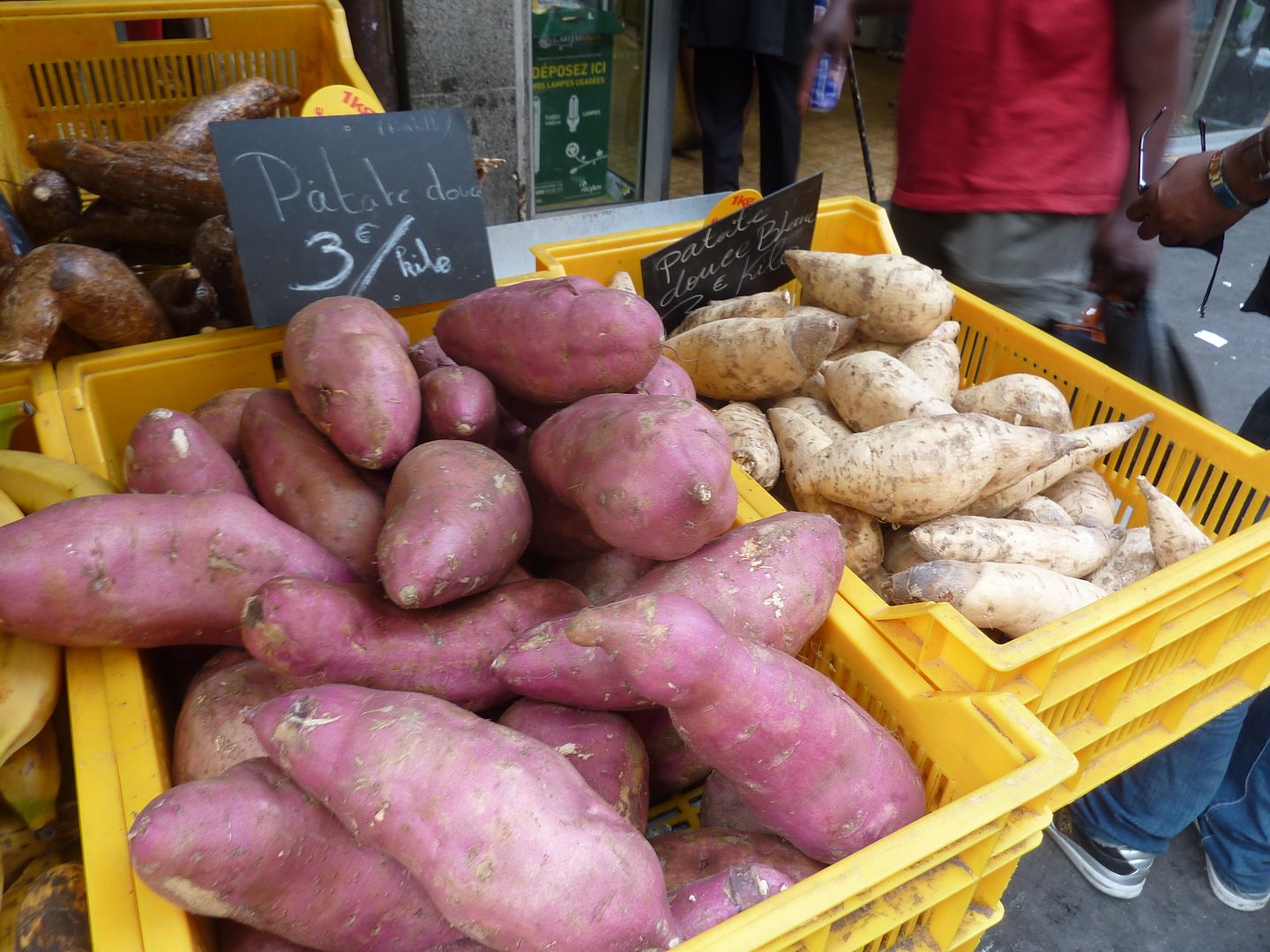
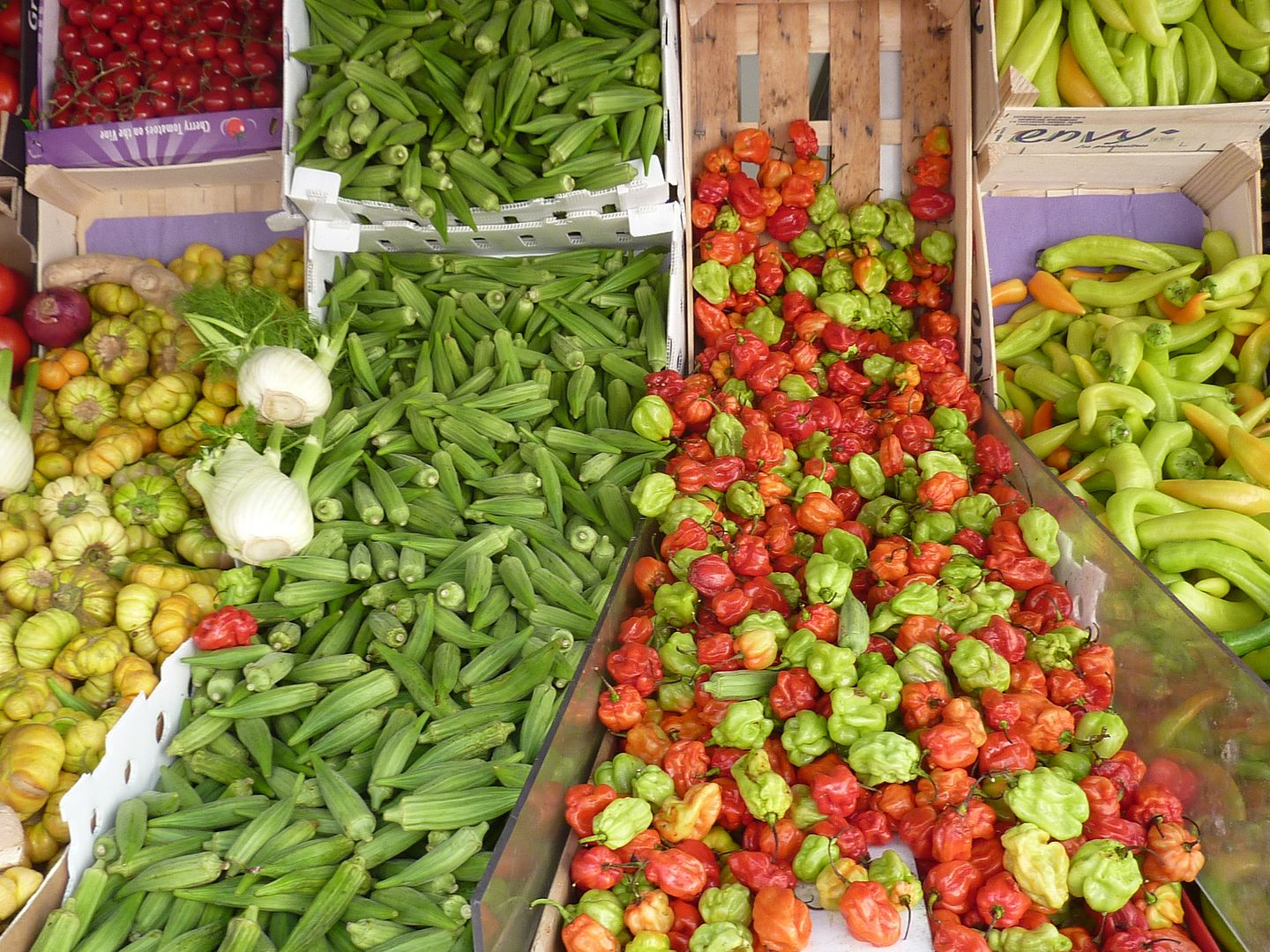
I want you to know that this was a much more difficult report to make than a lot of my other reports. Many of these people are clandestine immigrants engaged in illegal trade. They don't much like being photographed by strangers with unclear motives.
Therefore, I wasn't able to take pictures as freely as I would like, but I am pleased to announce that I am so sneaky that only once did someone run up to me in a threatening manner to make me delete the photo that I had just taken.
People sell all sorts of things out on the street -- clothes, sunglasses, belts, pirated DVDs, odd fruit, strange herbs... It won't be until the end of summer that the women will be hawking big burlap bags of "mice! mice! mice!" (Actually, they are saying "maïs! maïs! maïs" and are selling roasted sweetcorn on the cob.)
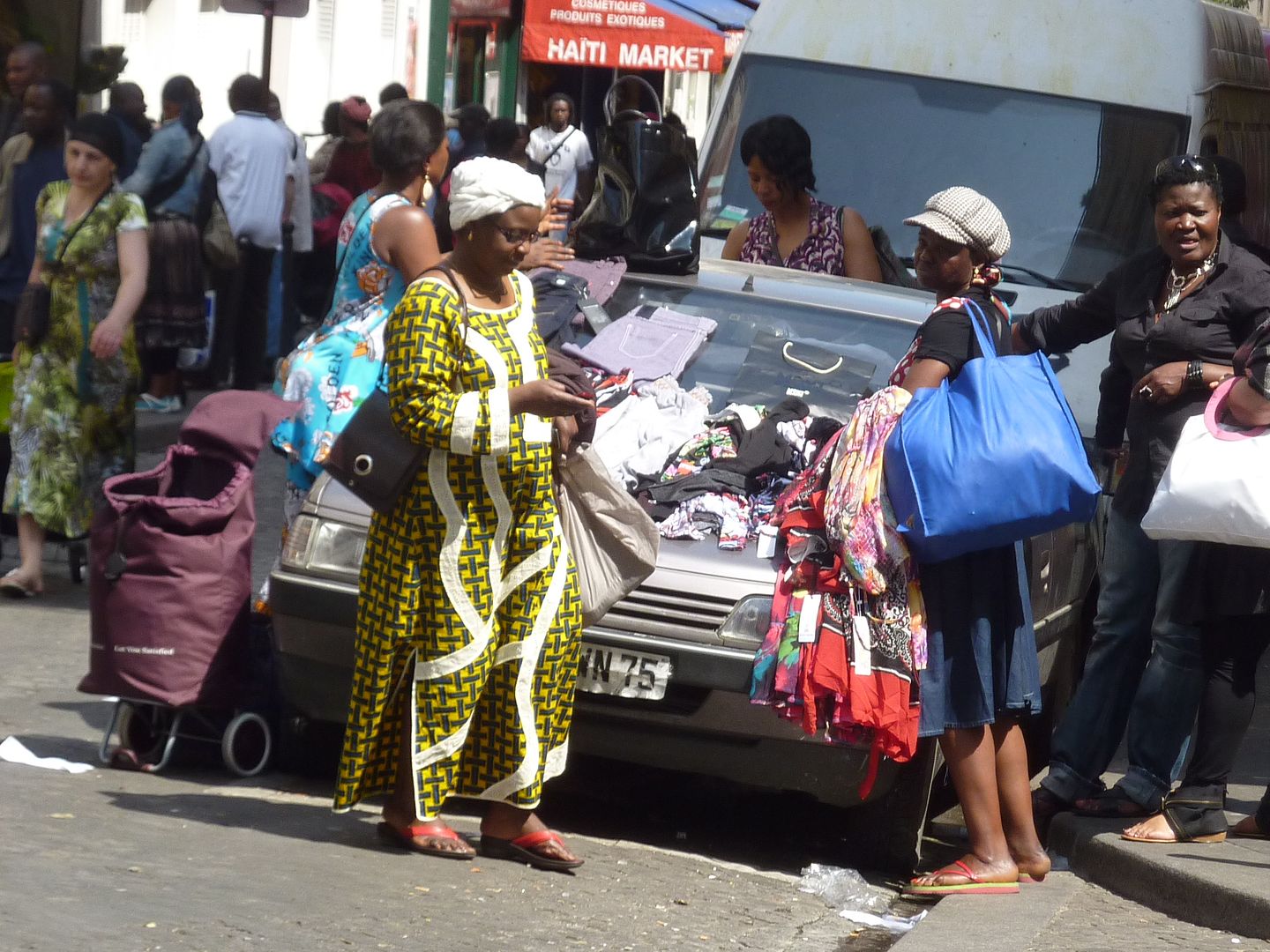

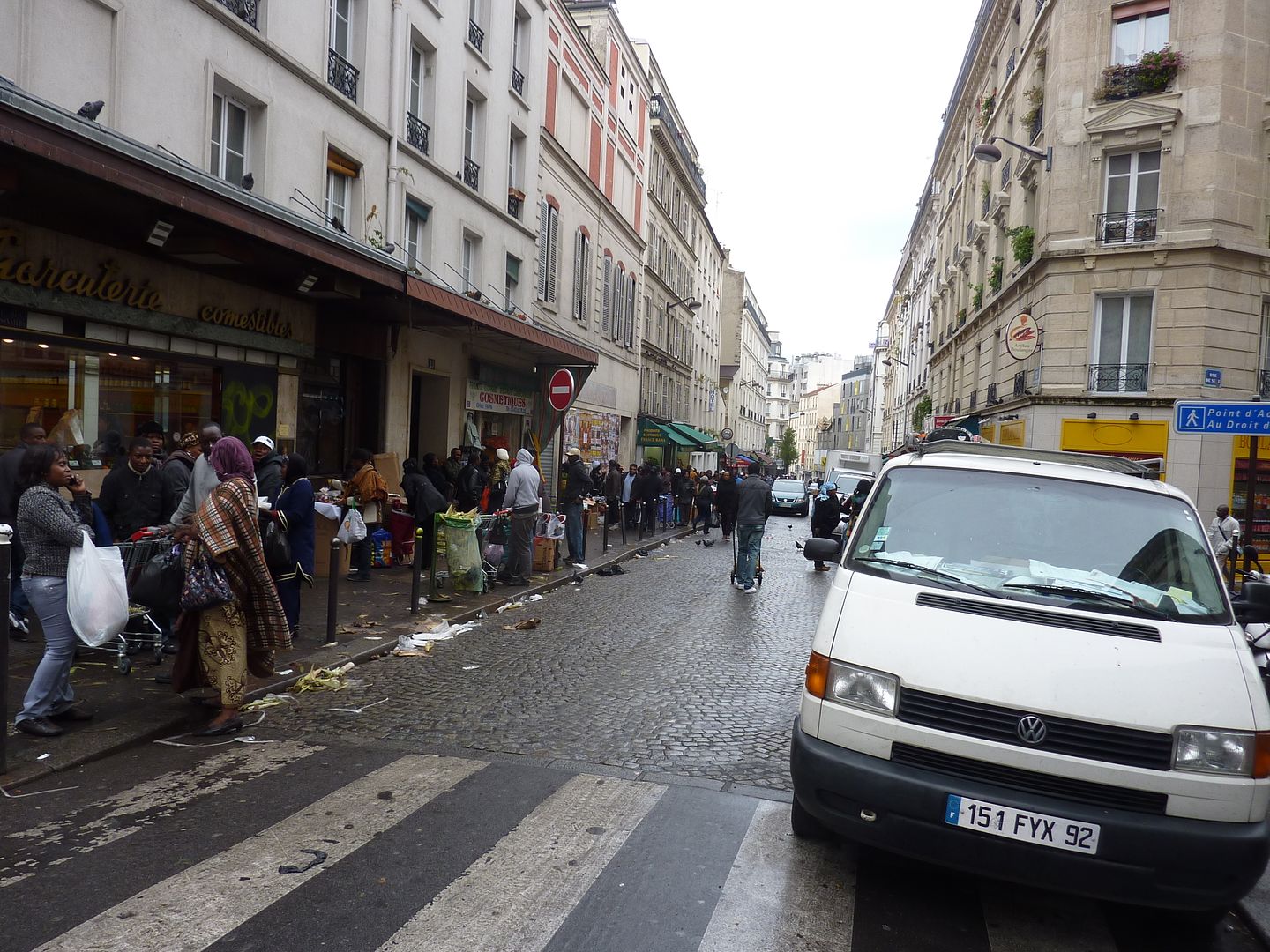
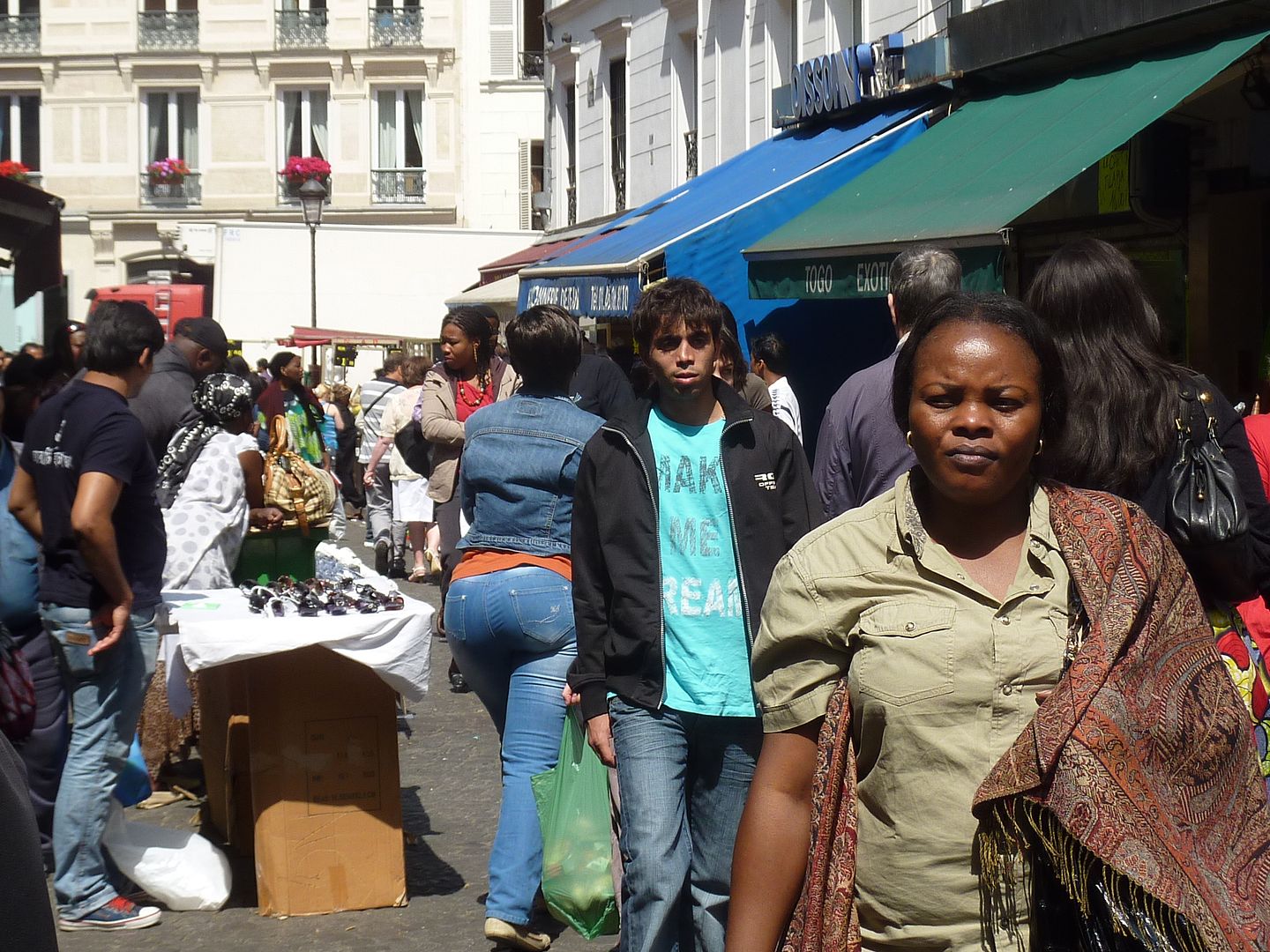
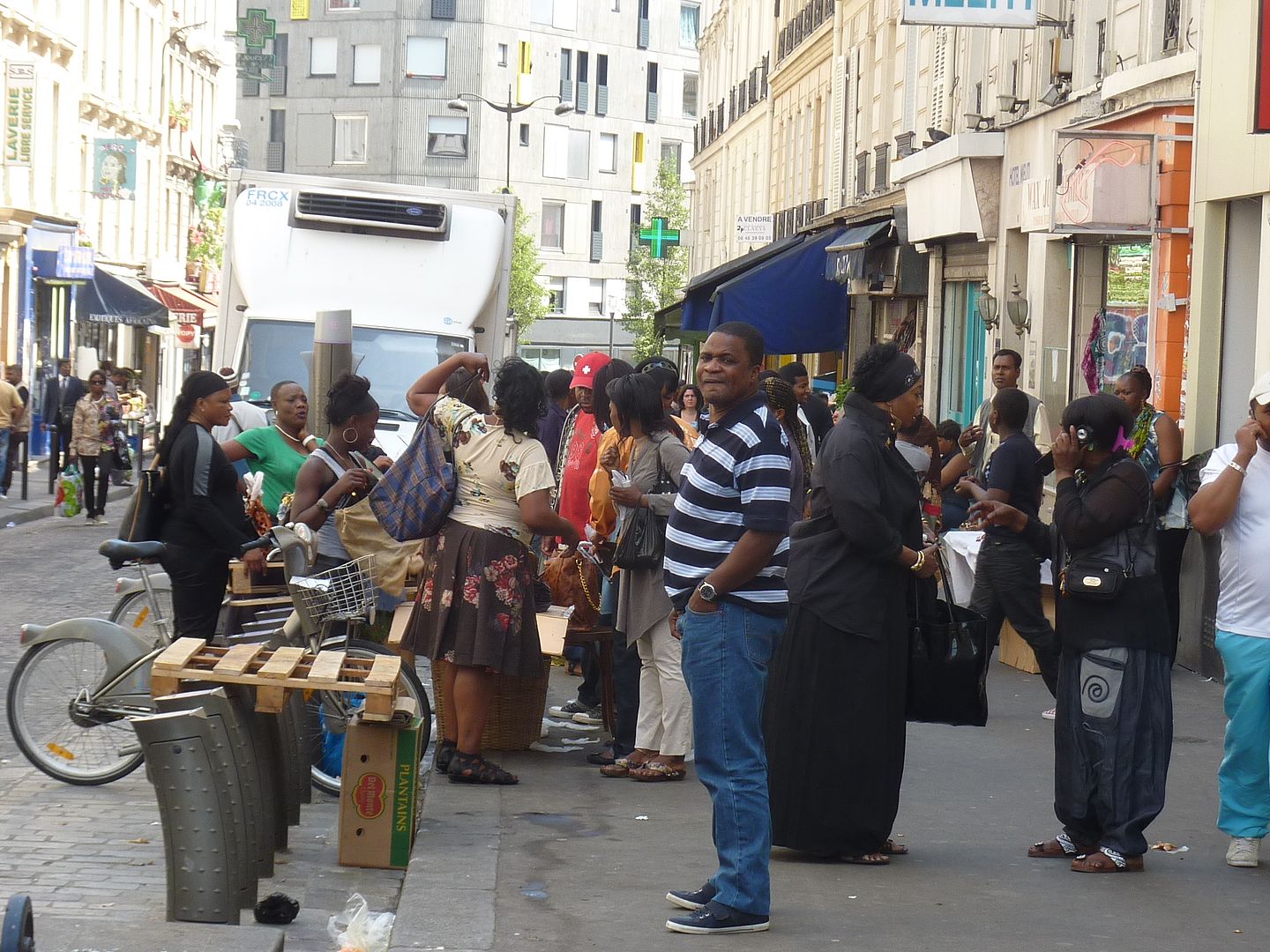
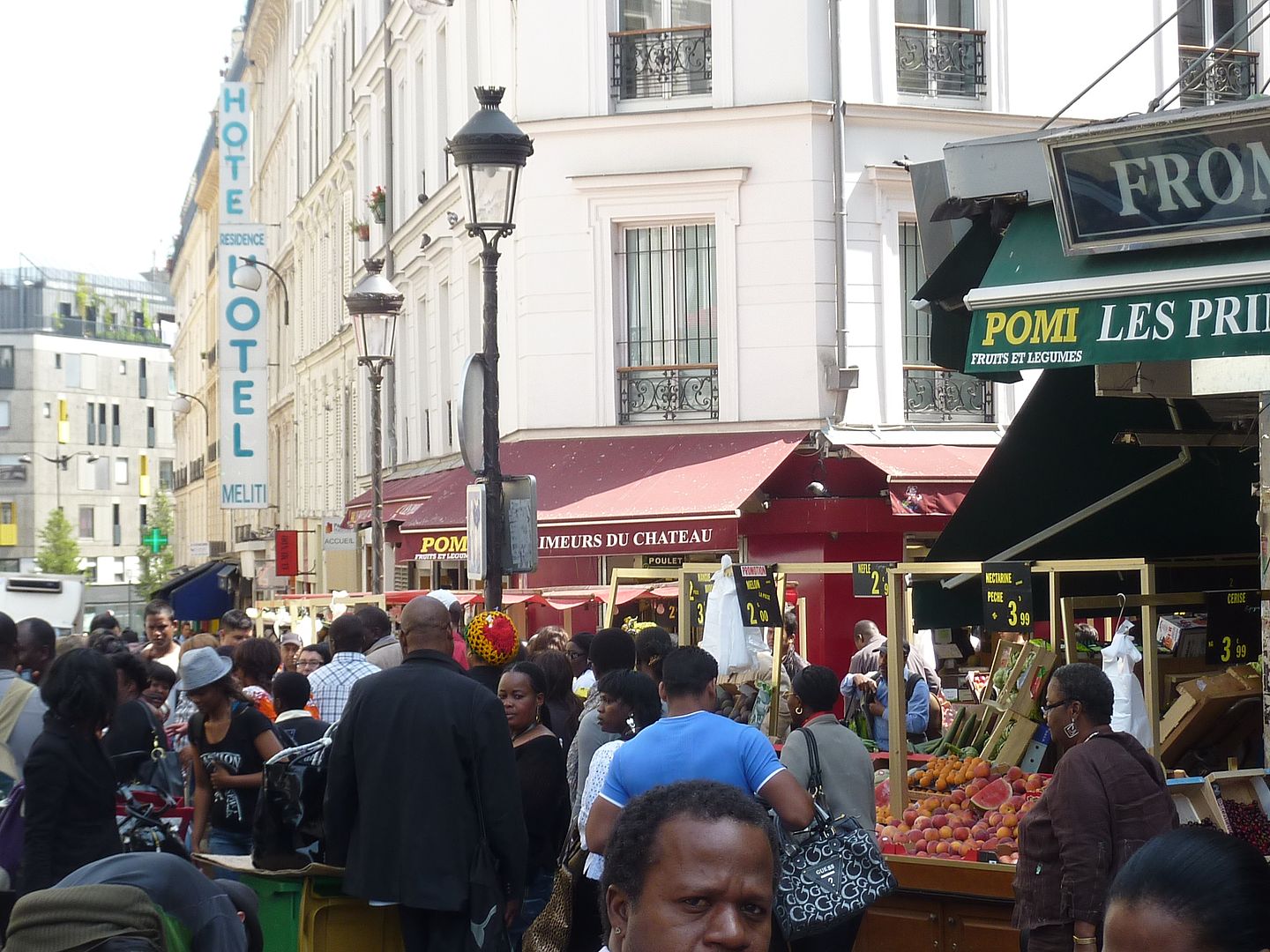
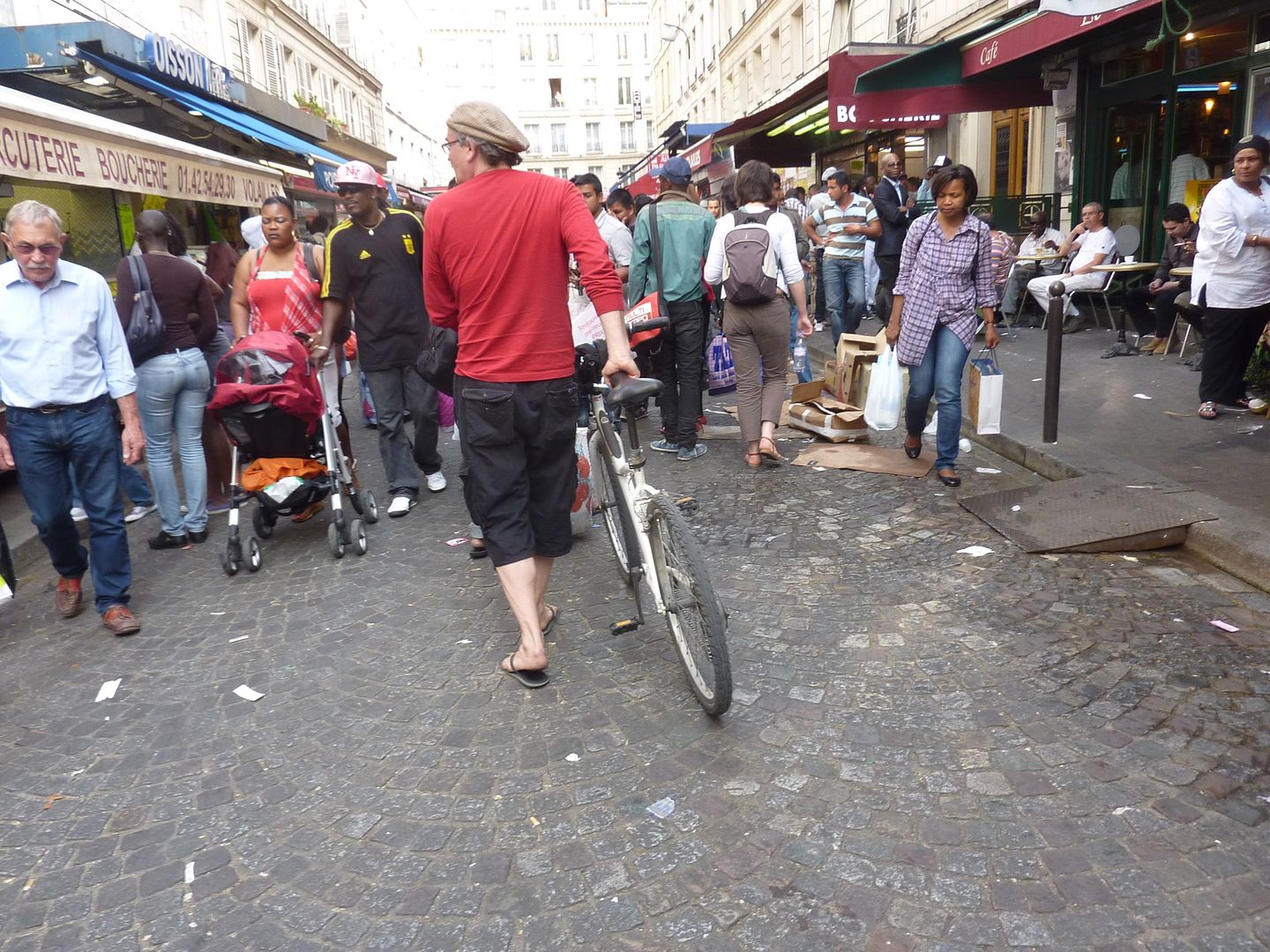
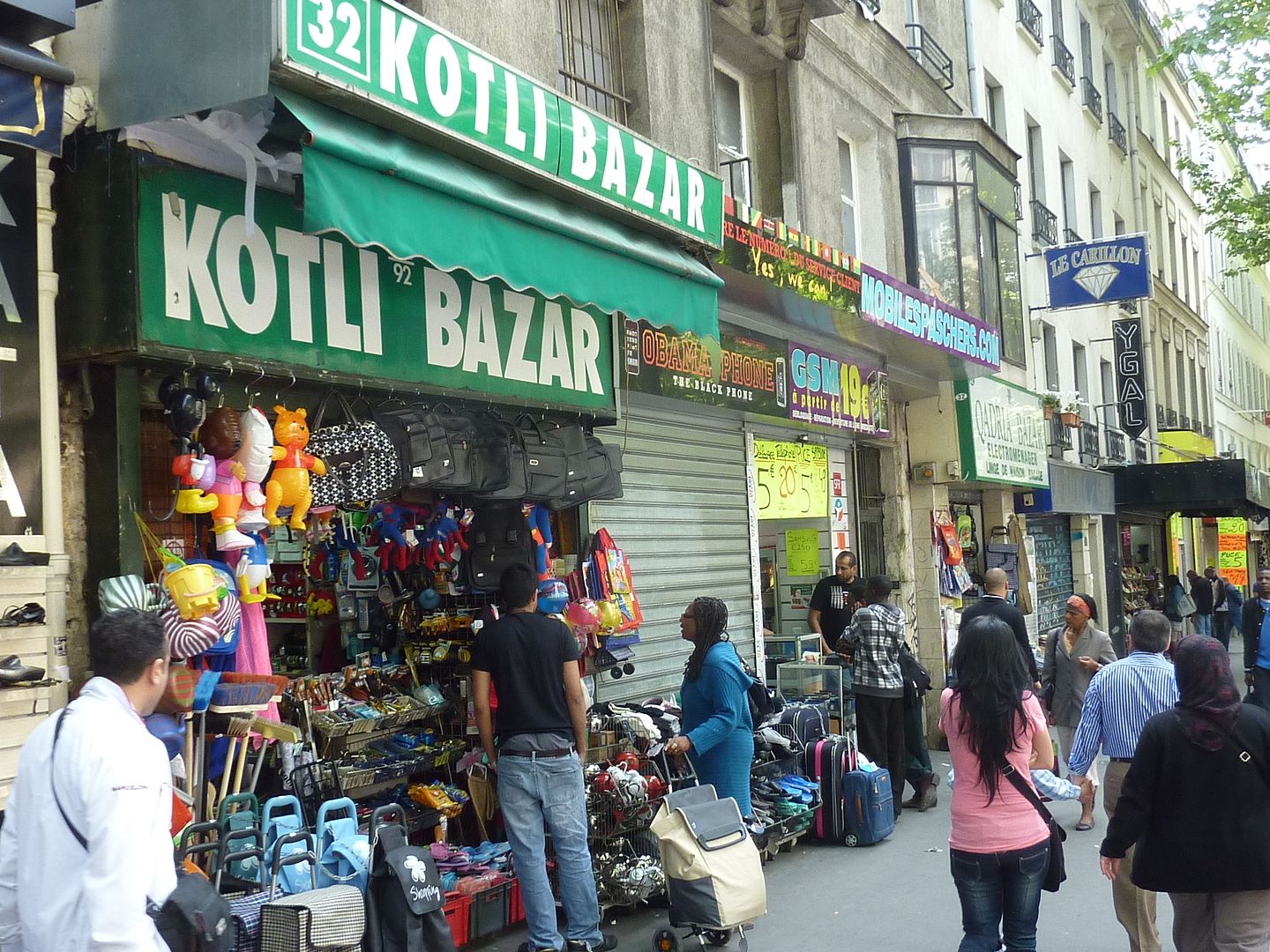
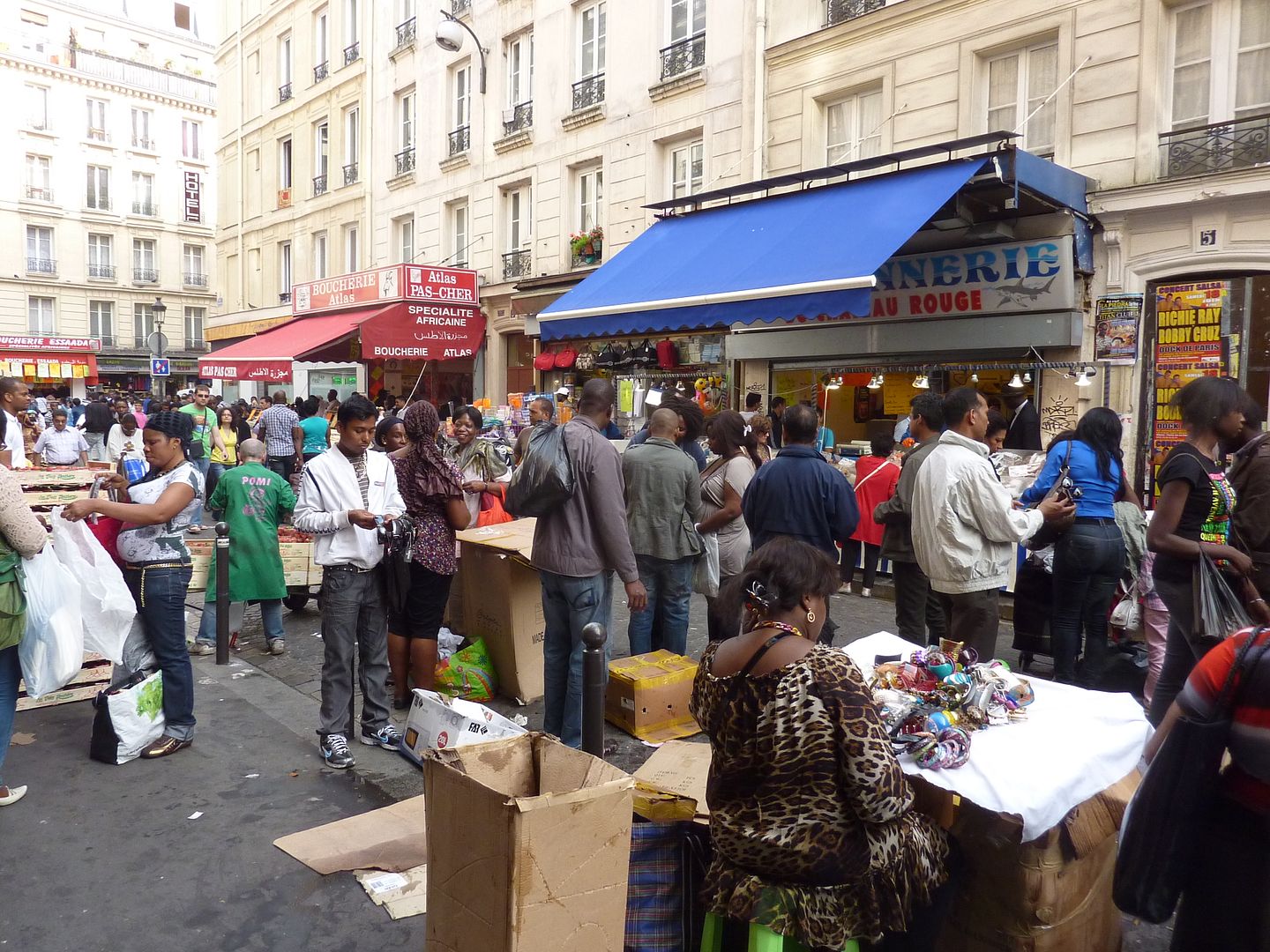
The police come through every 30 minutes... or twice a day... or not at all, depending on their mood. It sends everybody running for cover, with big plastic bags of merchandise. When the police are in a bad mood, they will destroy the cardboard boxes that serve as display stands. Usually, they don't bother because they are human beings like the rest of us.
 "]There is clearly great pride in the concept of "Africa" because you find it in a large number of the names of the shops. (This would sort of be in contrast to the name "Paris Store" being used by the southeast Asians as the name of the 2nd biggest chain of Asian supermarkets in France.)
"]There is clearly great pride in the concept of "Africa" because you find it in a large number of the names of the shops. (This would sort of be in contrast to the name "Paris Store" being used by the southeast Asians as the name of the 2nd biggest chain of Asian supermarkets in France.)
There is great pride in being from Africa, even if you are also a Parisian.





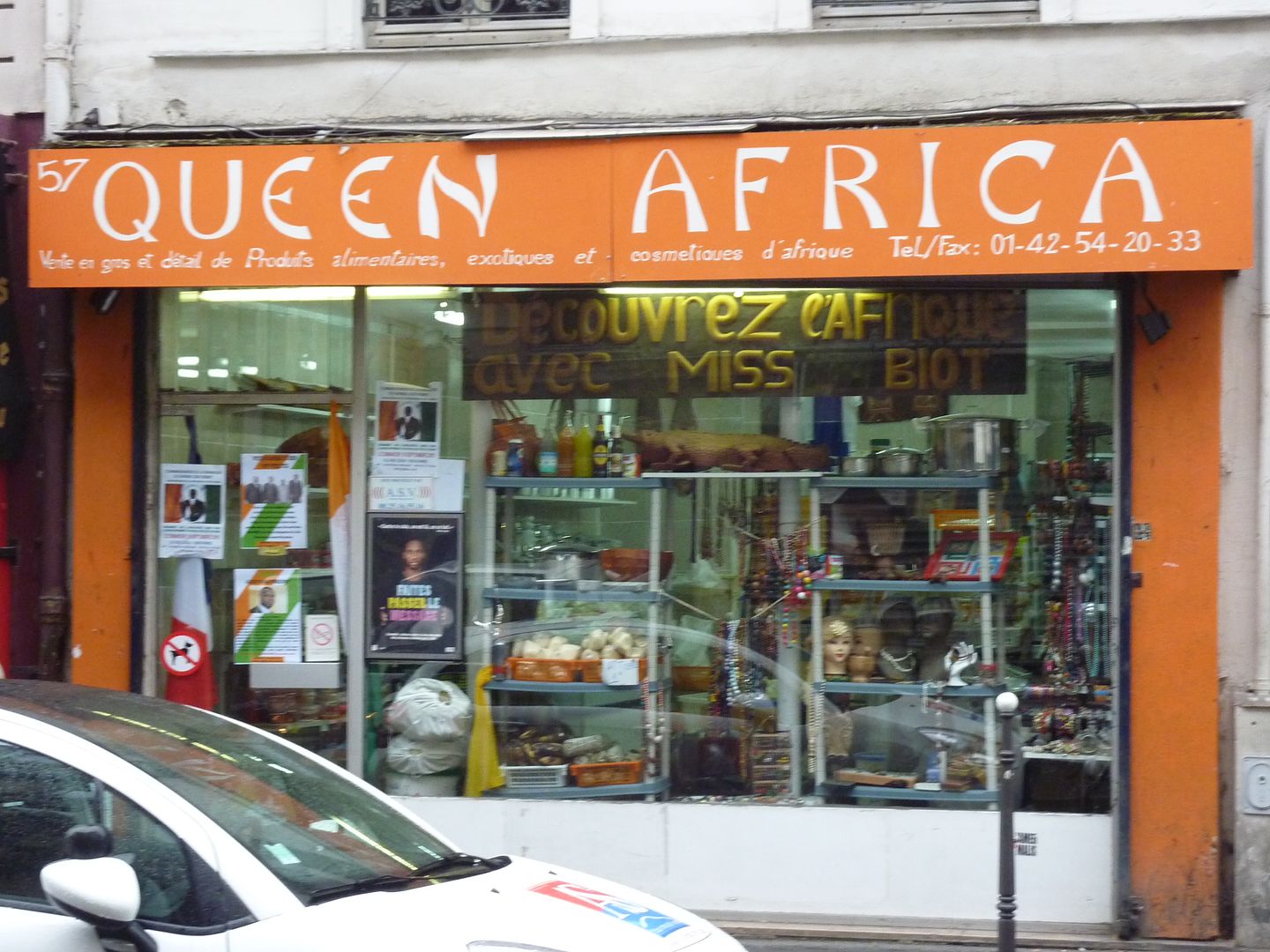
But you can also find community pride in people from other countries.
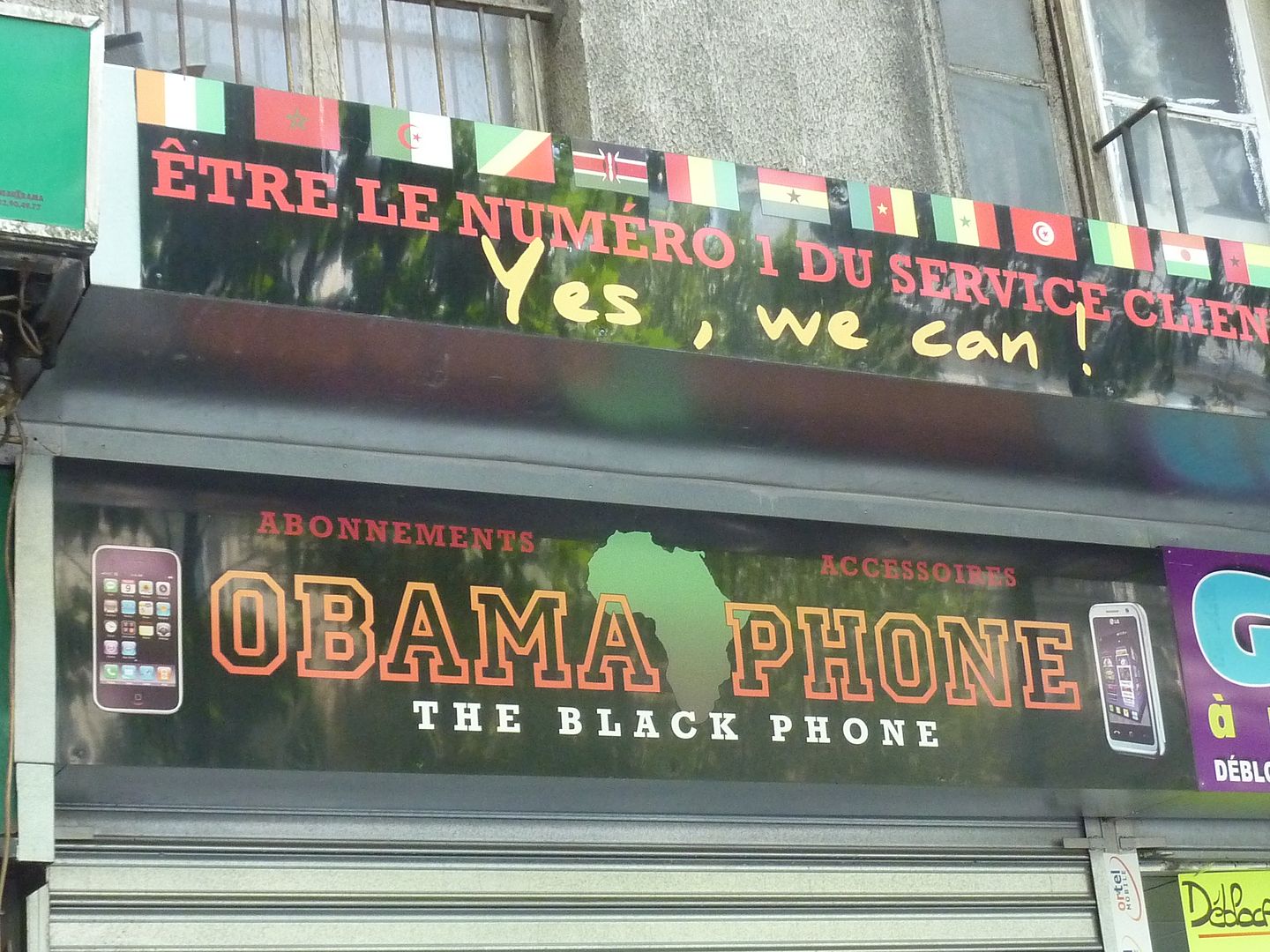
If you need calves' feet or oxtail, this is the area to come to the butcher shops.




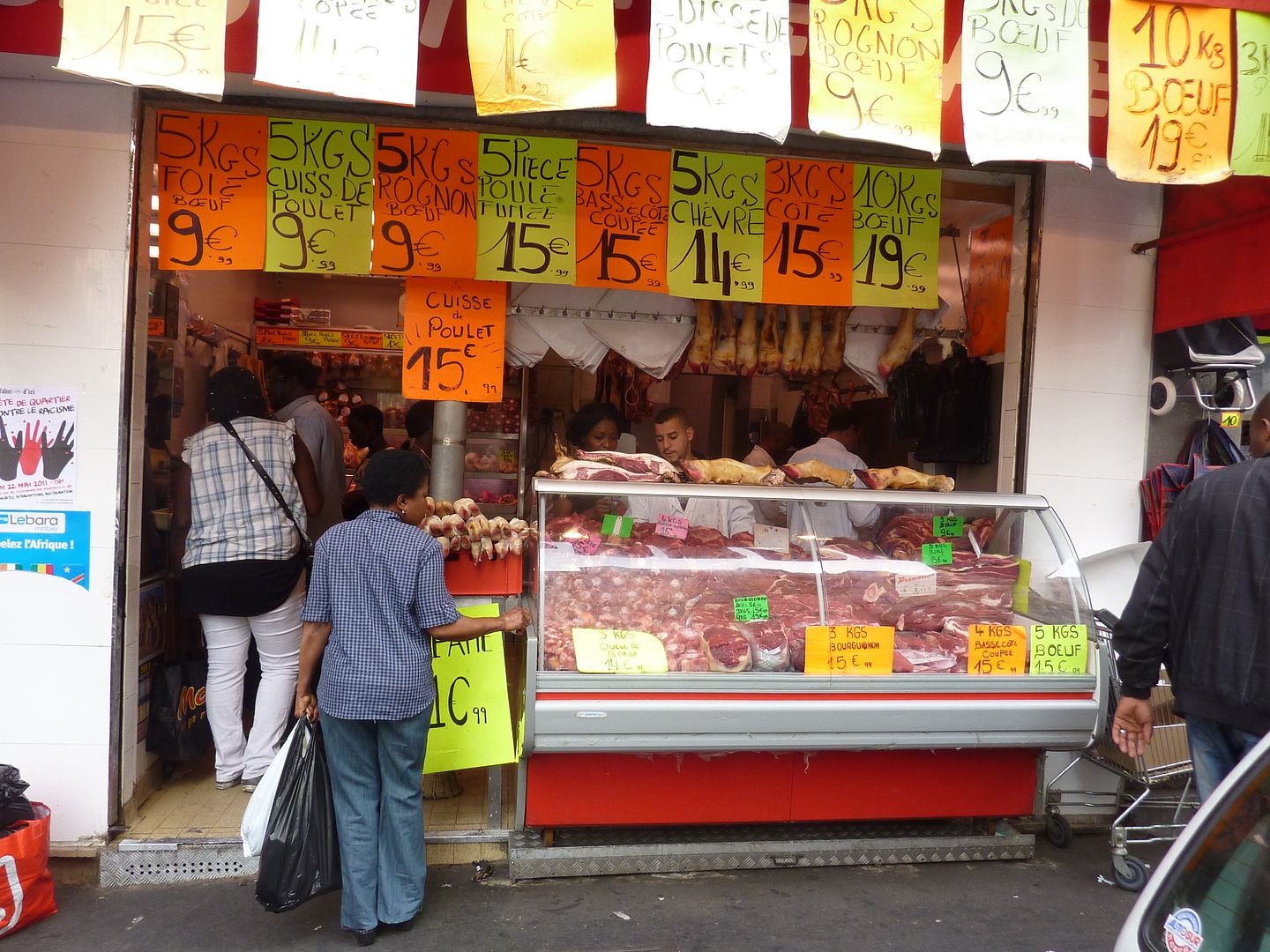
I did notice that one or two of the grocery stores had decided to be rather modern and chic, even if they sold the same products as the other places.


The metro station becomes so overcrowded on Saturday that the RATP sends agents for traffic control. They even restrict access and only allow people into the station every couple minutes. I have never seen this at any other metro station in Paris.

Fabric for dresses is an essential part of African culture. It is rather shocking to discover that nearly all of the fabrics are made in the Netherlands and Germany, most particularly the highly prized bazin.
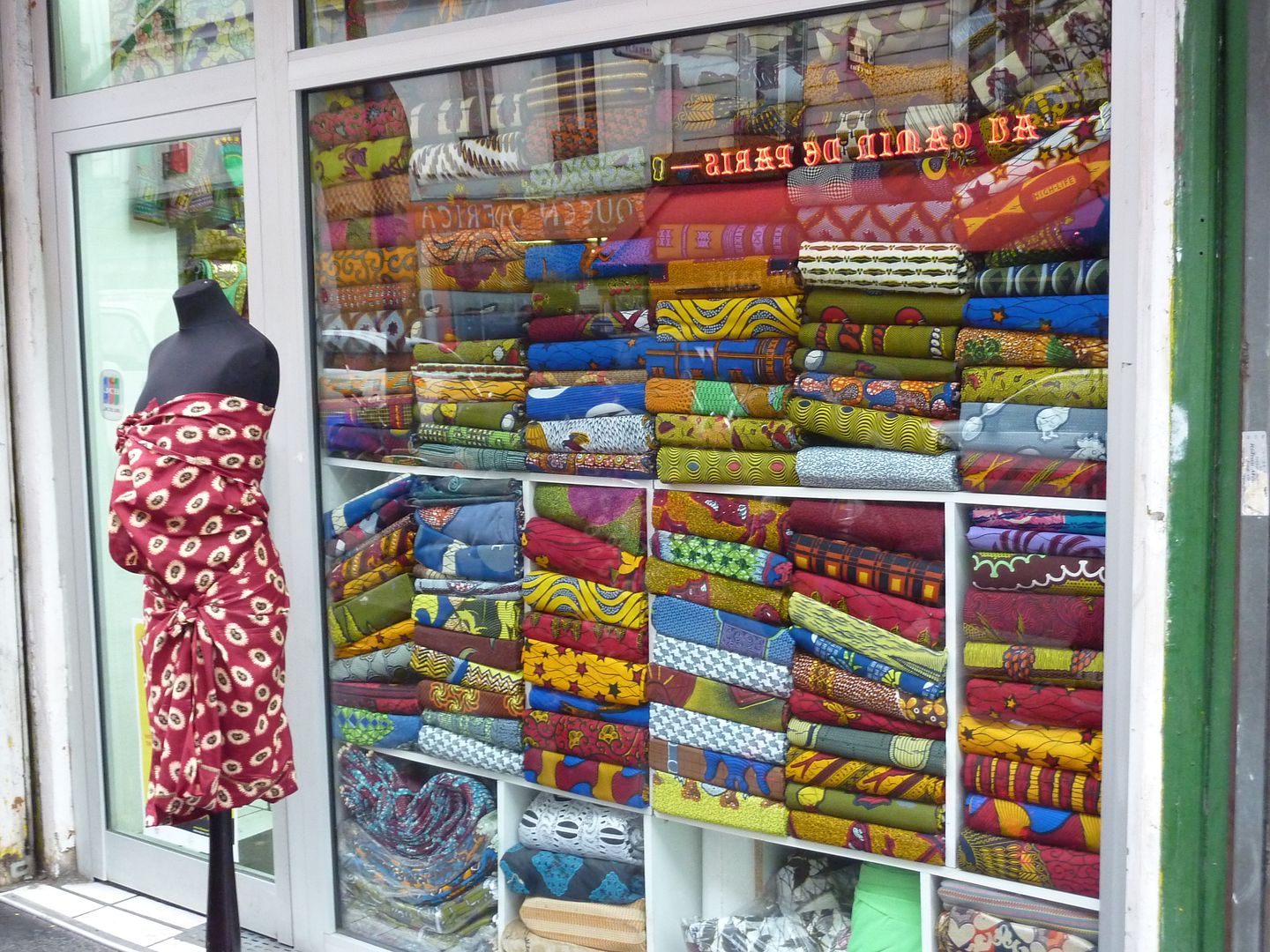
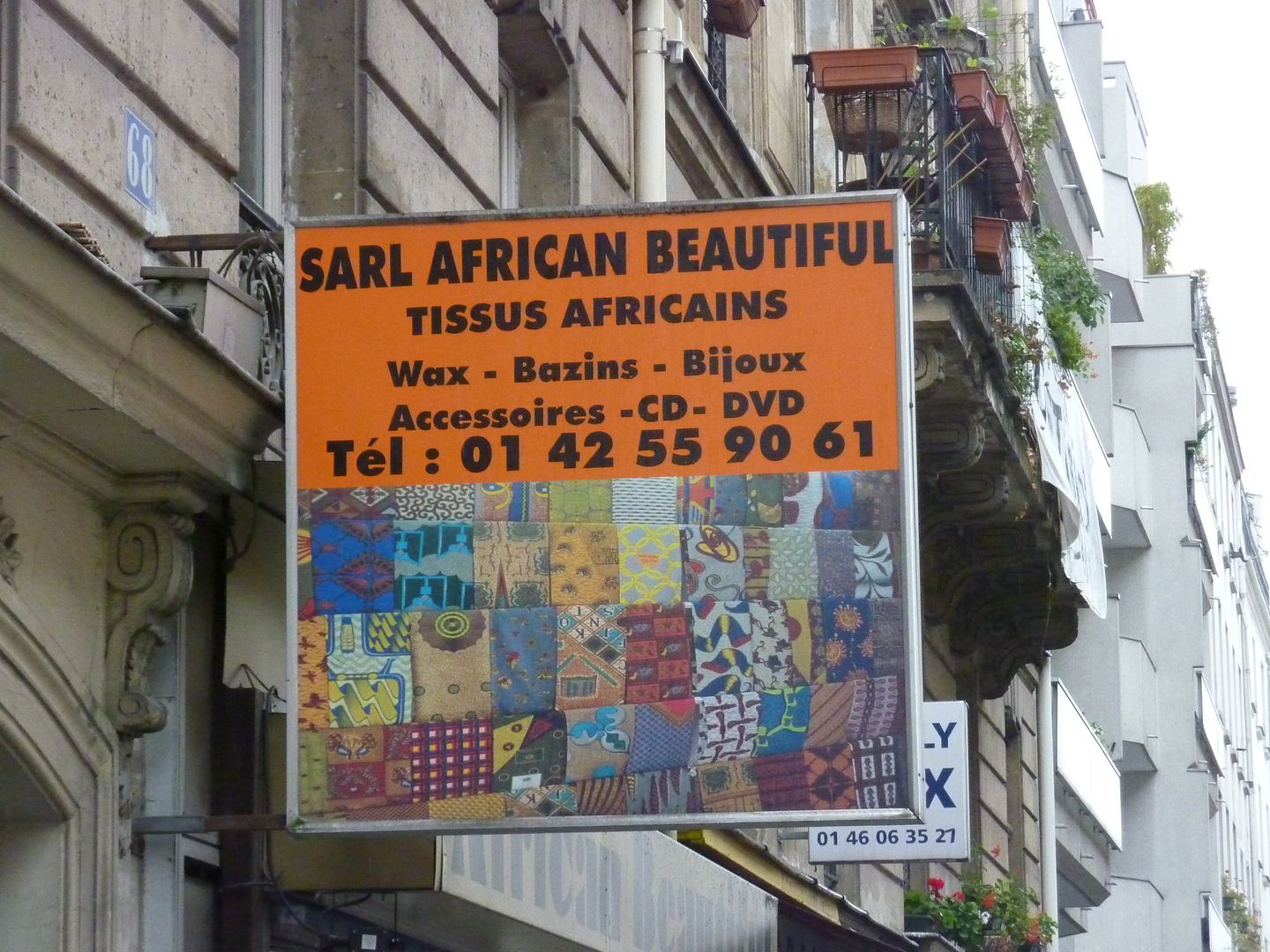

Posters for African music concerts are everywhere. I am often surprised to see that they are often in major venues like the Zénith, but since Paris is the capital of "world music" the renown of a lot of these musicians goes far beyond the immigrant community.

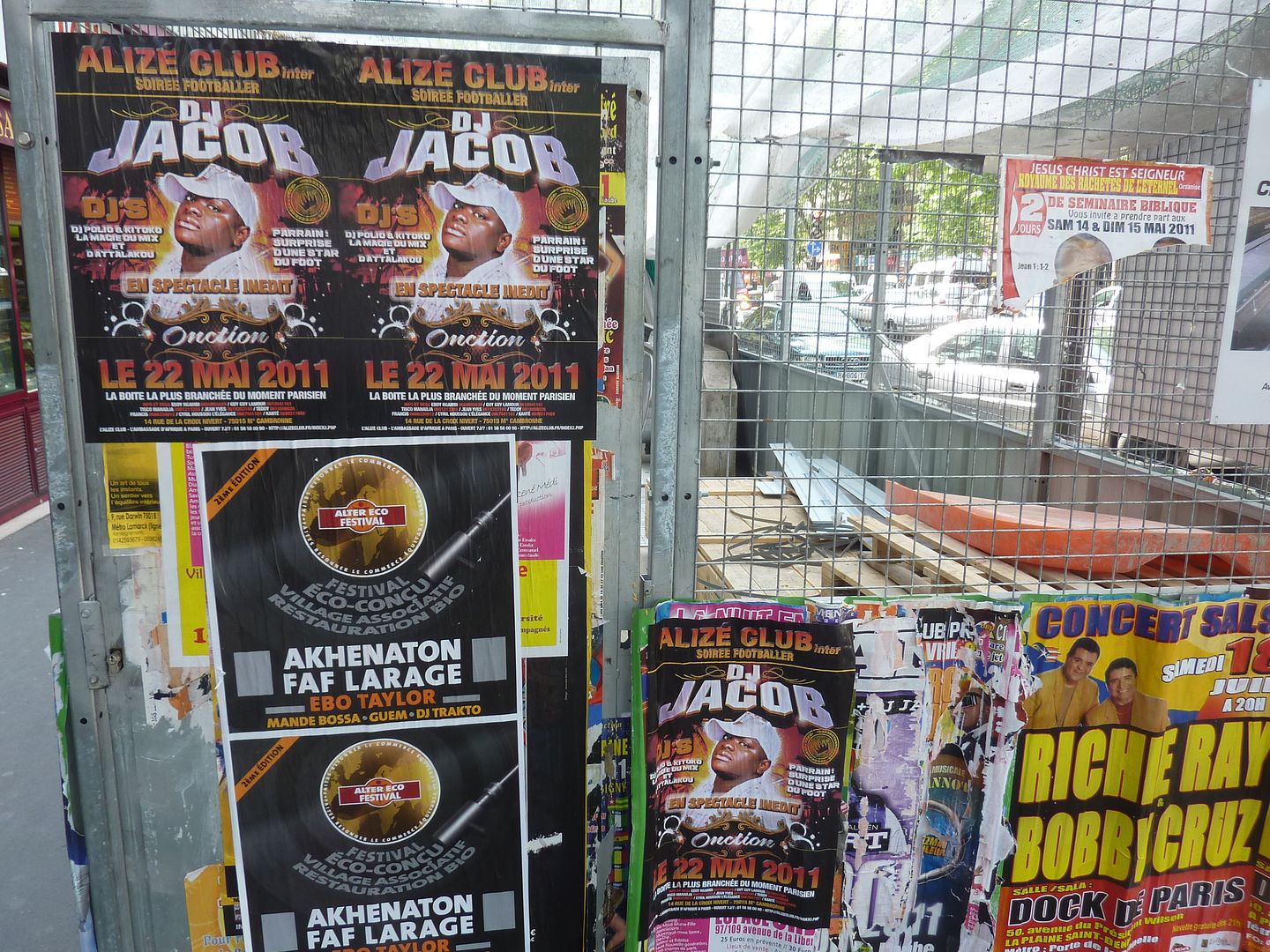
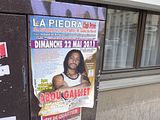
Bring on the food! Unfortunately, I did not stay around to see it. But I will try to add some more photos to this thread in the future, because the area absolutely deserves it.
If anybody wants to see more of the Goutte d'Or/Château Rouge area, I made a little cultural report last year when I unexpectedly encountered the Emperor of Château Rouge.
The area around the Château Rouge metro station already had plenty of immigrants and was cheap. There were several other areas that could have been chosen for another specific ethnic neighbourhood to form, but this sort of thing tends to happen by accident.

The core of any such neighbourhood is the food. The market street right at the metro exit is rue Dejean, and it has become a typical African market, even though there are still a few European merchants there. Business is good for everybody.





Various grocery stores complete the offer.
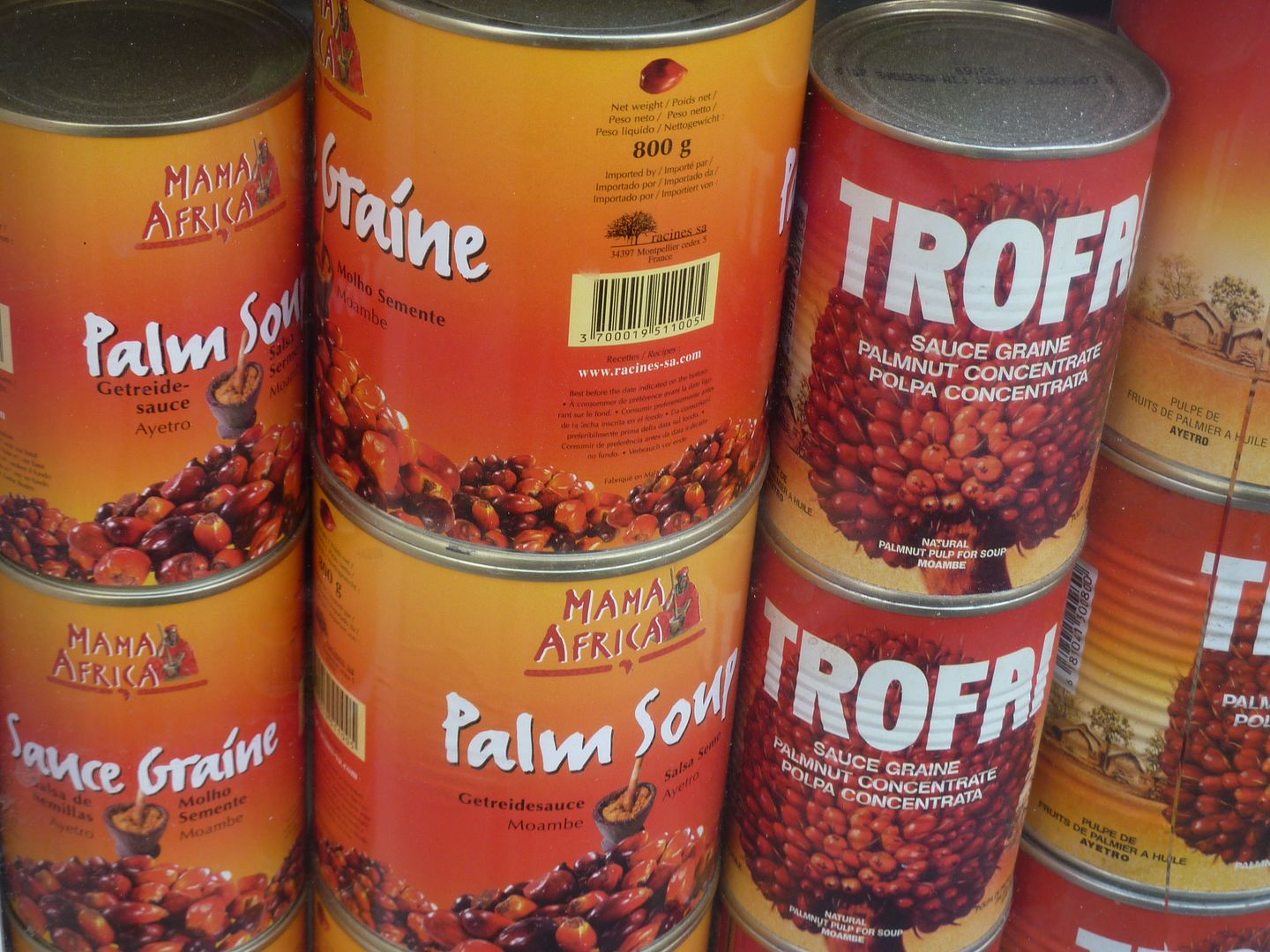

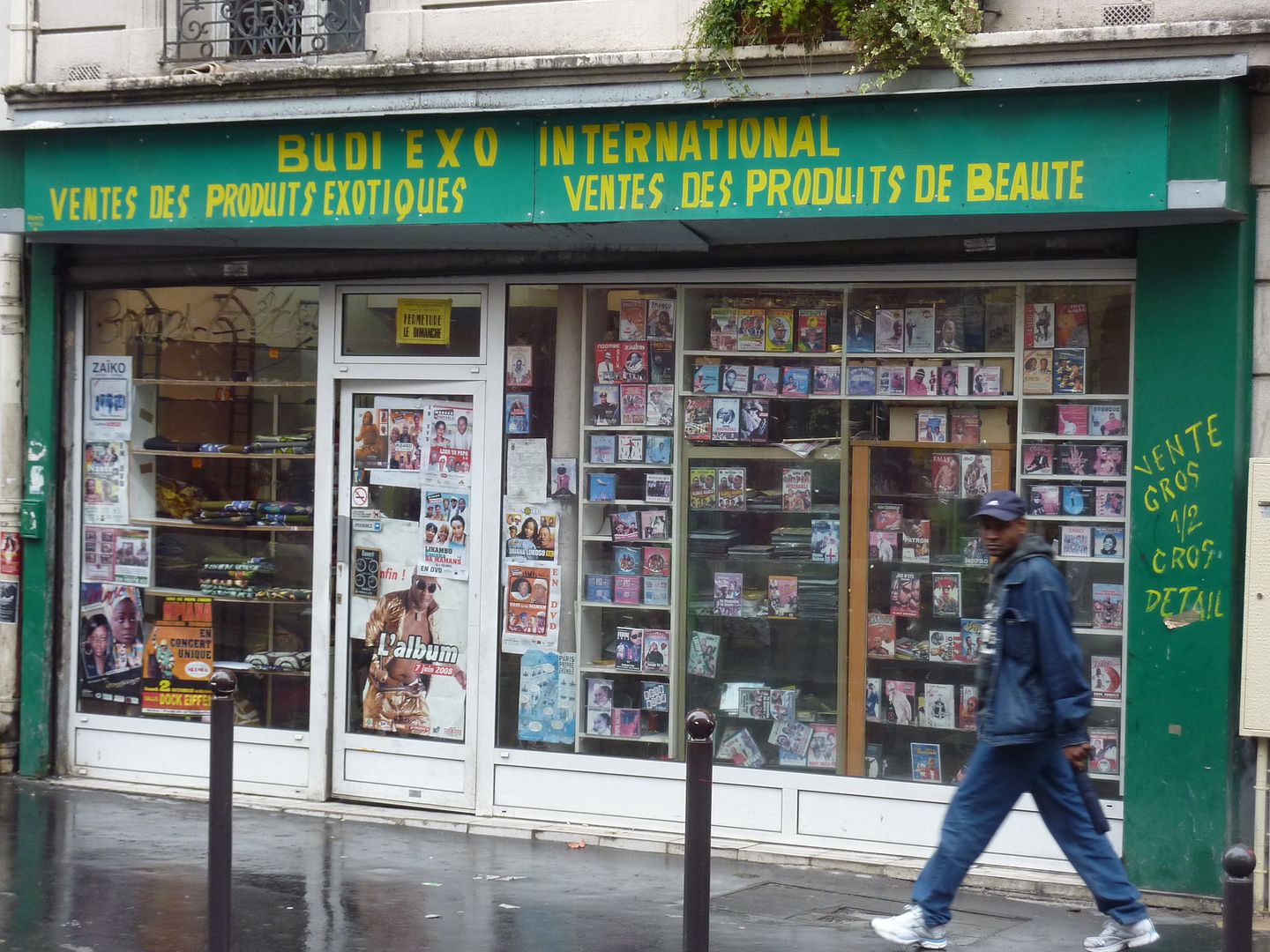

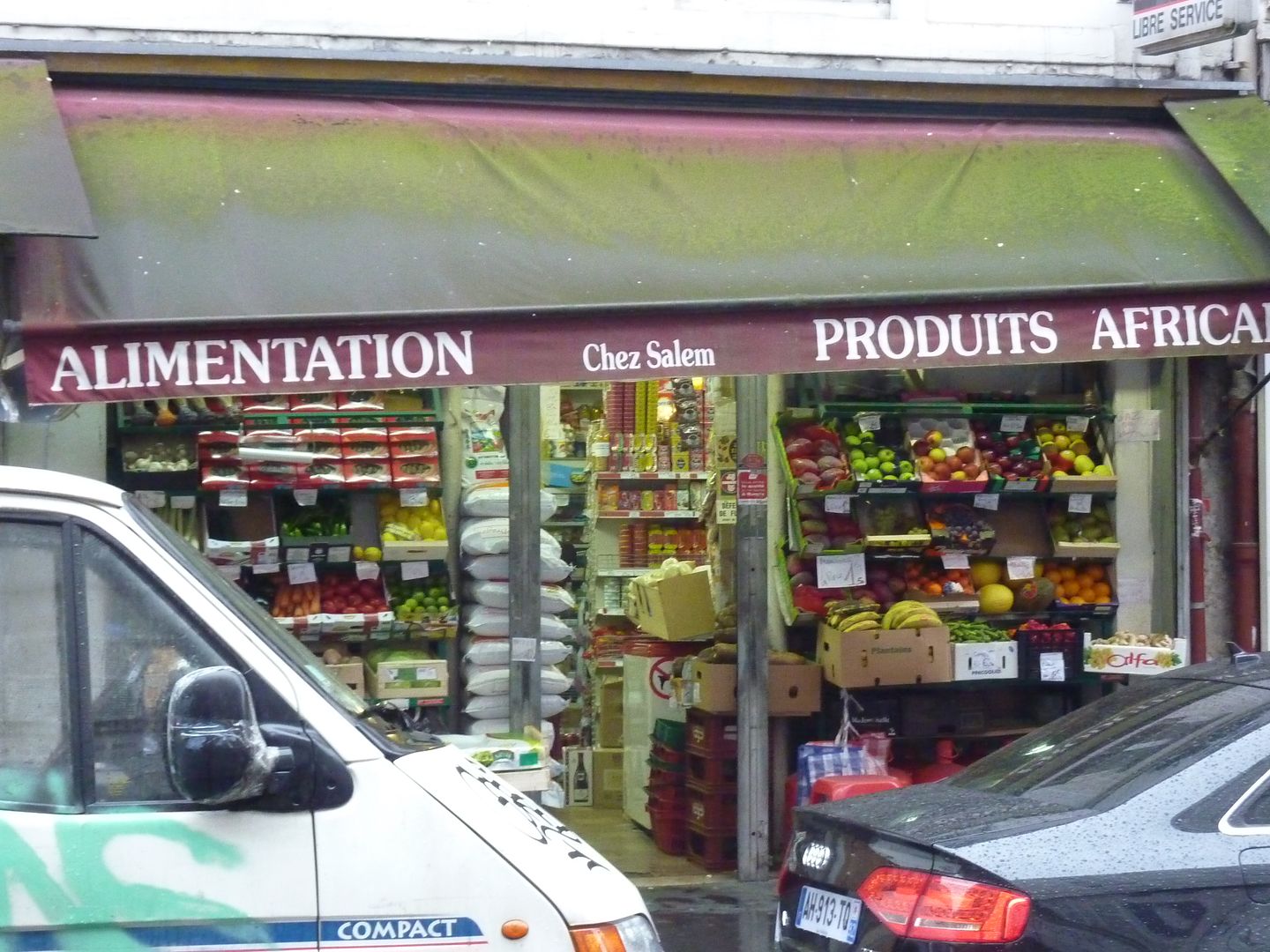





I want you to know that this was a much more difficult report to make than a lot of my other reports. Many of these people are clandestine immigrants engaged in illegal trade. They don't much like being photographed by strangers with unclear motives.
Therefore, I wasn't able to take pictures as freely as I would like, but I am pleased to announce that I am so sneaky that only once did someone run up to me in a threatening manner to make me delete the photo that I had just taken.
People sell all sorts of things out on the street -- clothes, sunglasses, belts, pirated DVDs, odd fruit, strange herbs... It won't be until the end of summer that the women will be hawking big burlap bags of "mice! mice! mice!" (Actually, they are saying "maïs! maïs! maïs" and are selling roasted sweetcorn on the cob.)









The police come through every 30 minutes... or twice a day... or not at all, depending on their mood. It sends everybody running for cover, with big plastic bags of merchandise. When the police are in a bad mood, they will destroy the cardboard boxes that serve as display stands. Usually, they don't bother because they are human beings like the rest of us.
 "]
"]There is great pride in being from Africa, even if you are also a Parisian.






But you can also find community pride in people from other countries.

If you need calves' feet or oxtail, this is the area to come to the butcher shops.





I did notice that one or two of the grocery stores had decided to be rather modern and chic, even if they sold the same products as the other places.


The metro station becomes so overcrowded on Saturday that the RATP sends agents for traffic control. They even restrict access and only allow people into the station every couple minutes. I have never seen this at any other metro station in Paris.

Fabric for dresses is an essential part of African culture. It is rather shocking to discover that nearly all of the fabrics are made in the Netherlands and Germany, most particularly the highly prized bazin.



Posters for African music concerts are everywhere. I am often surprised to see that they are often in major venues like the Zénith, but since Paris is the capital of "world music" the renown of a lot of these musicians goes far beyond the immigrant community.



Telephone boutiques and freight shipping services are of great importance.
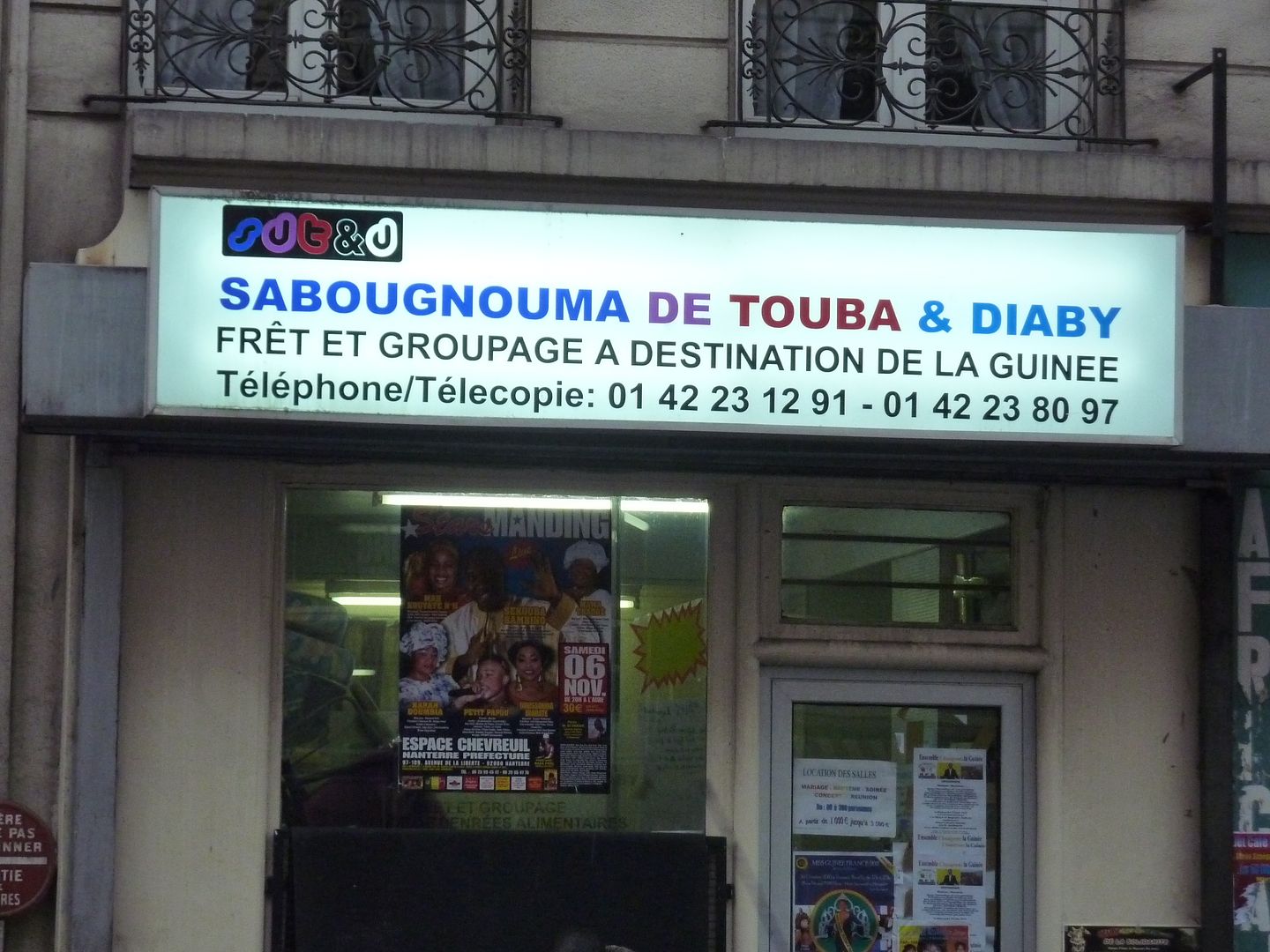
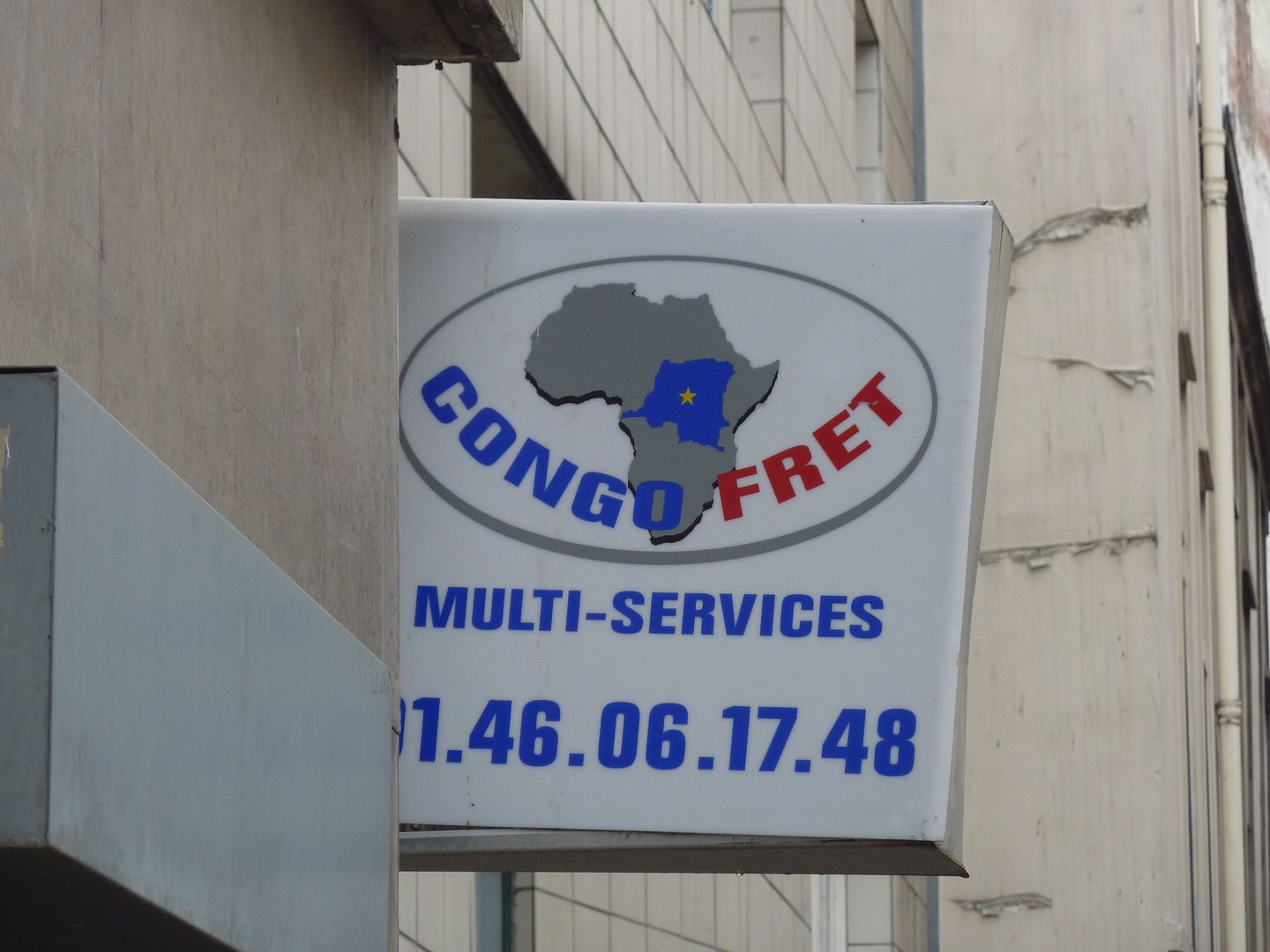
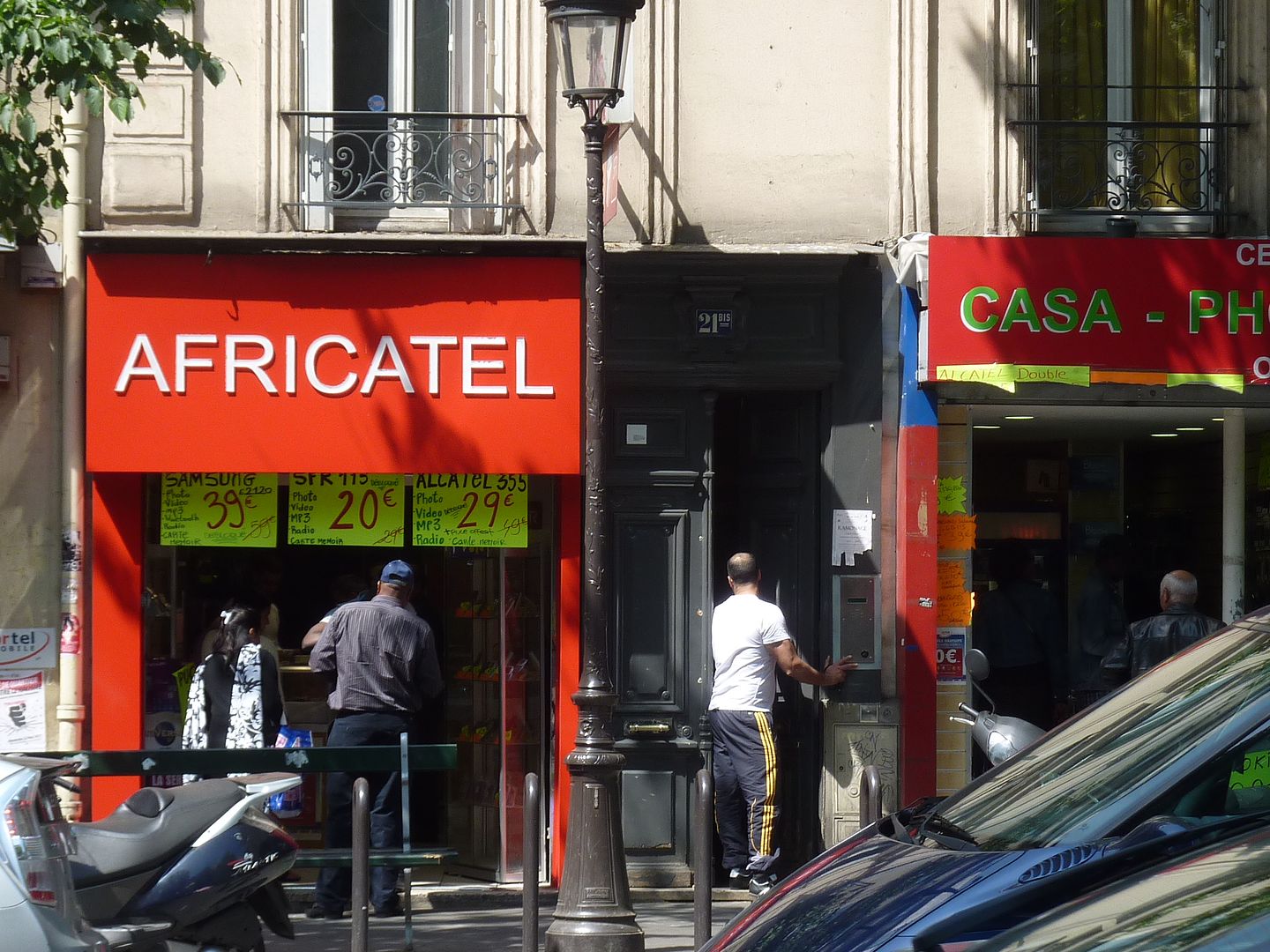

Frankly, I enjoy just about everything in this area.
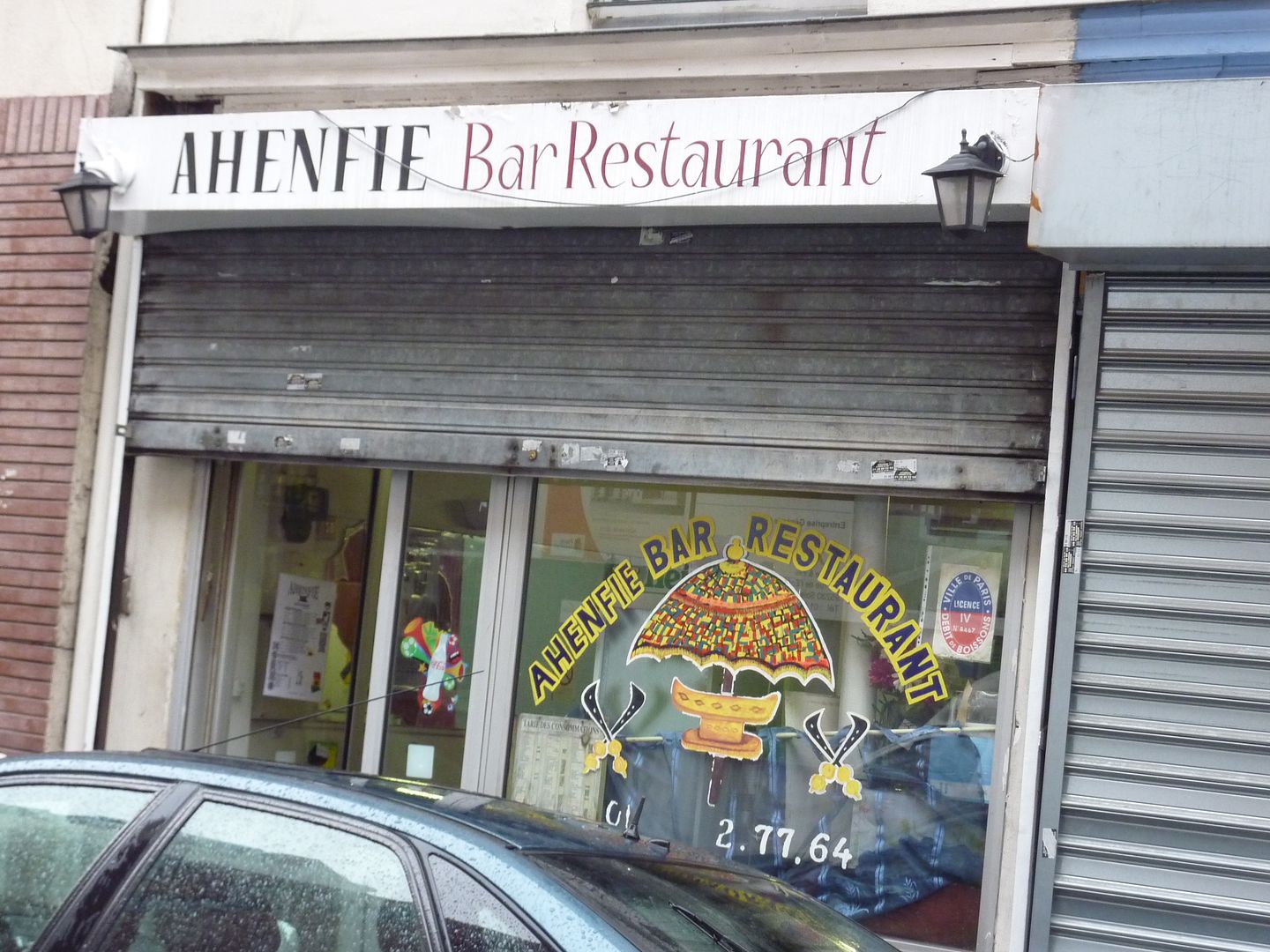
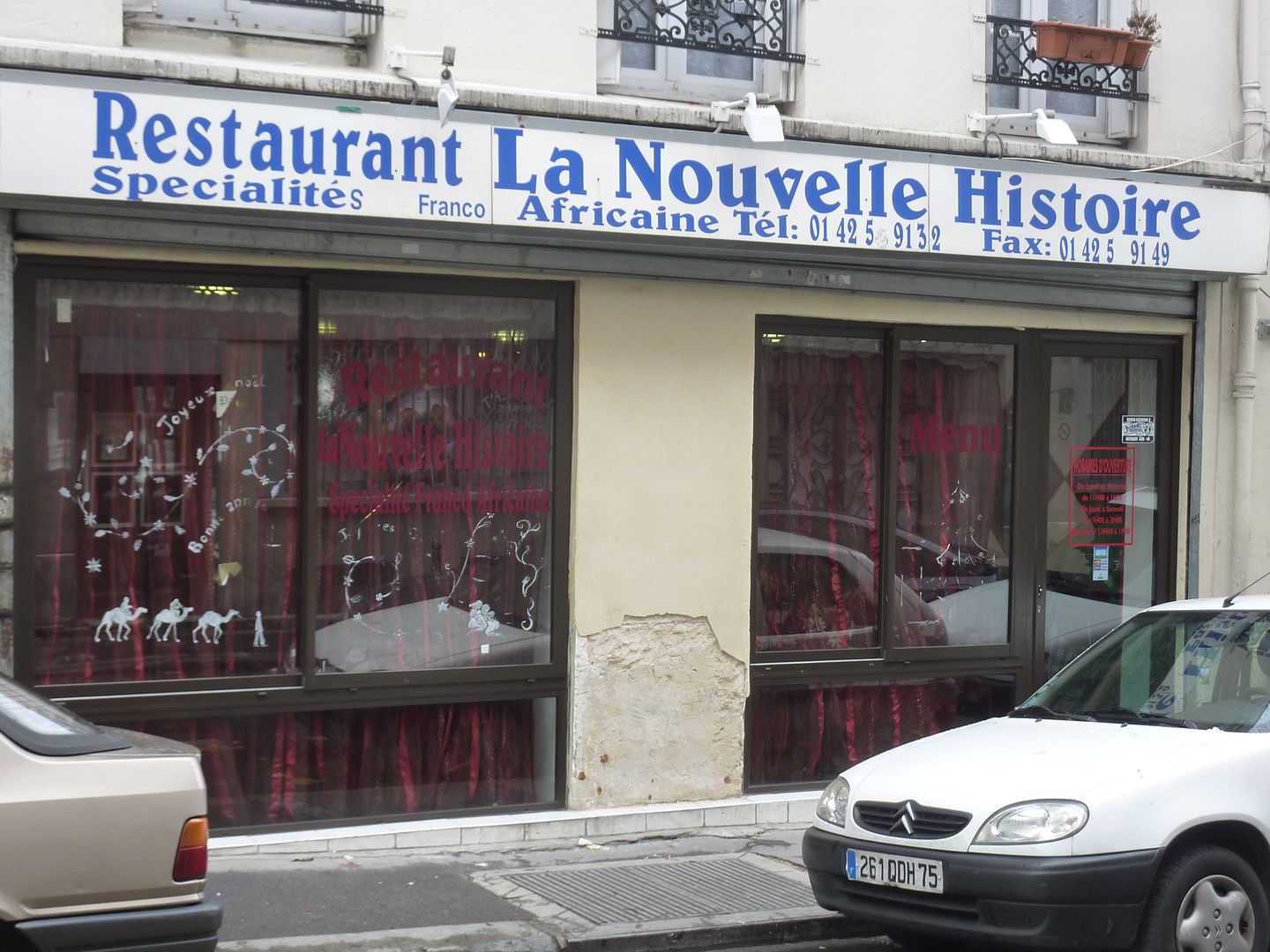
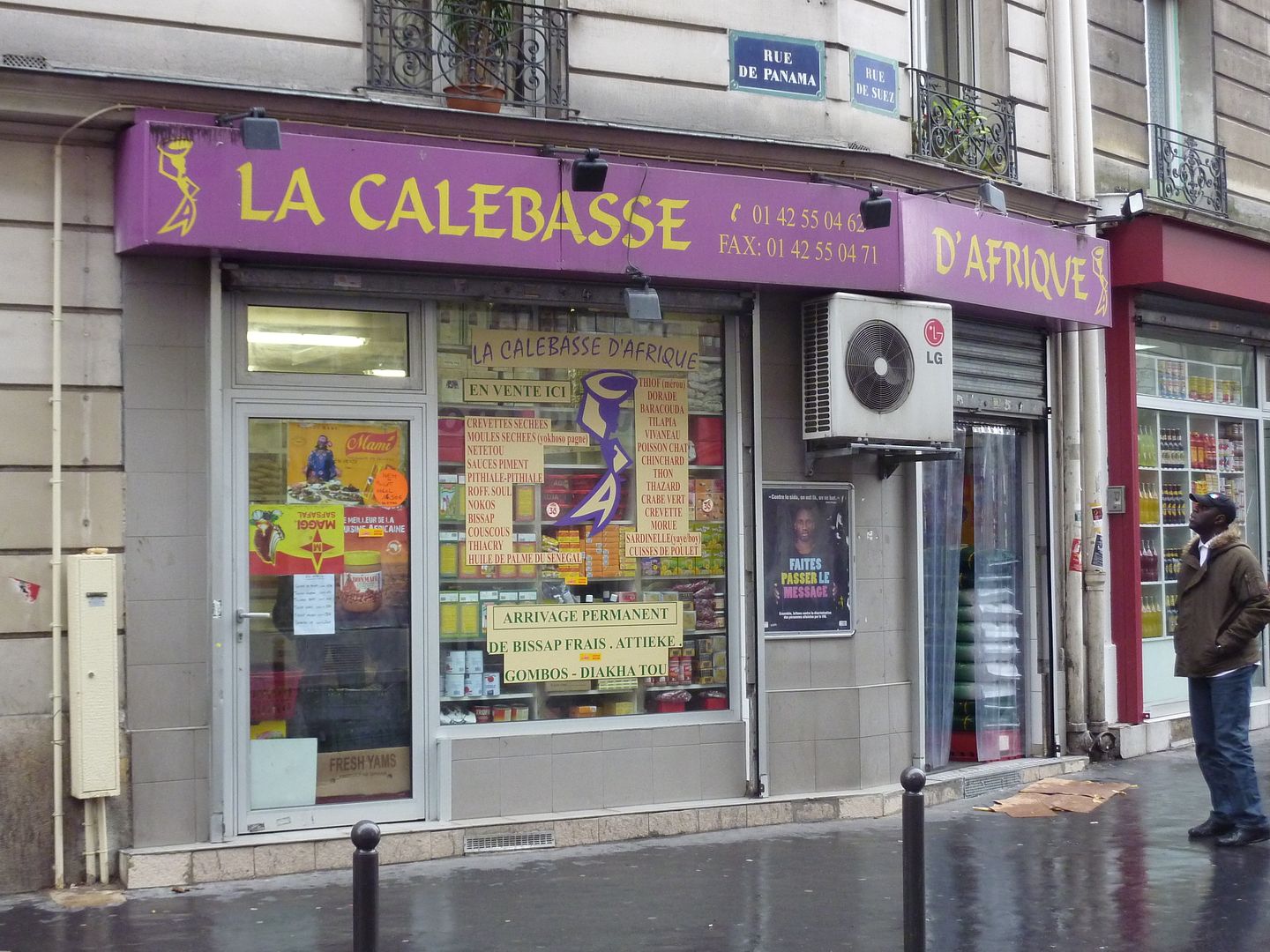
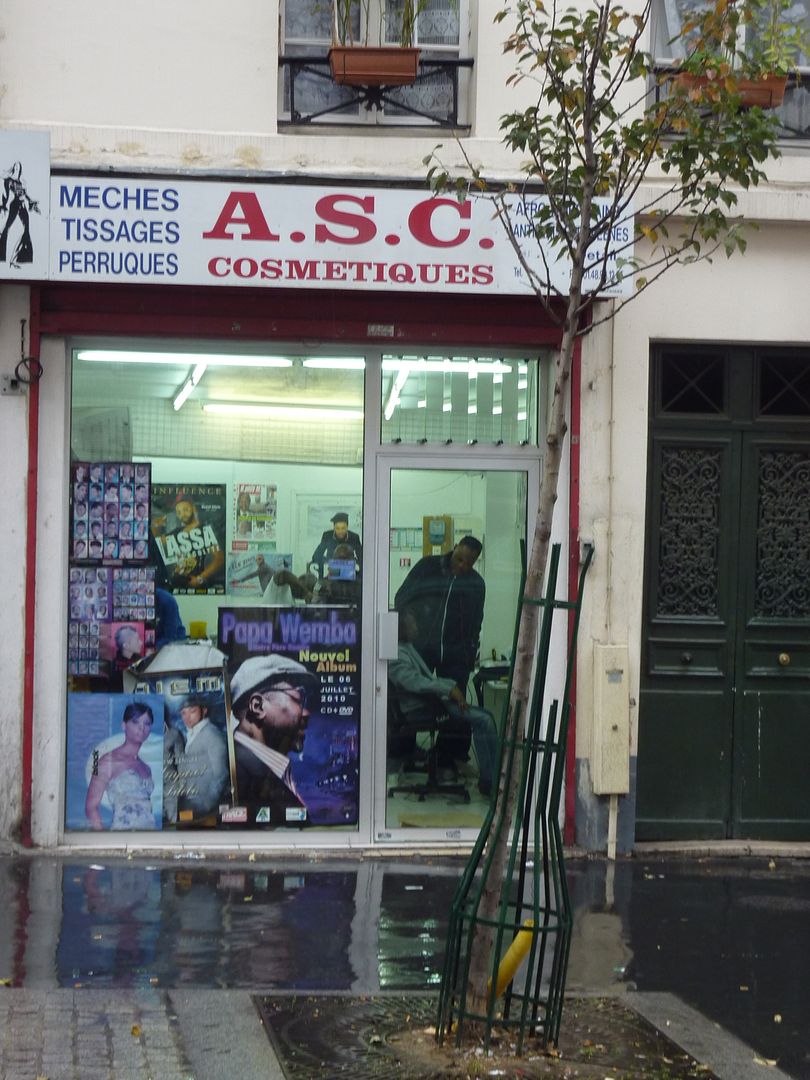

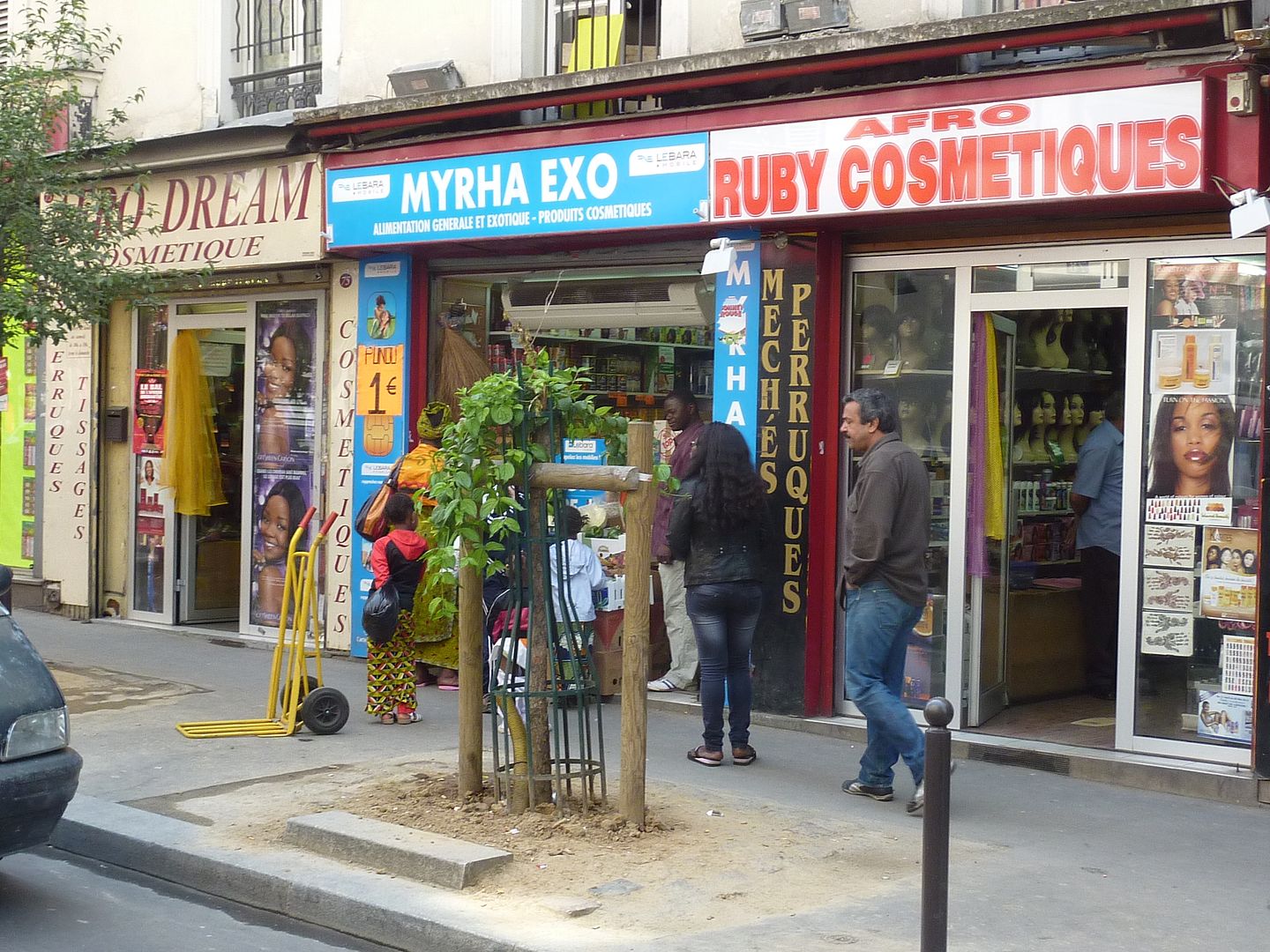

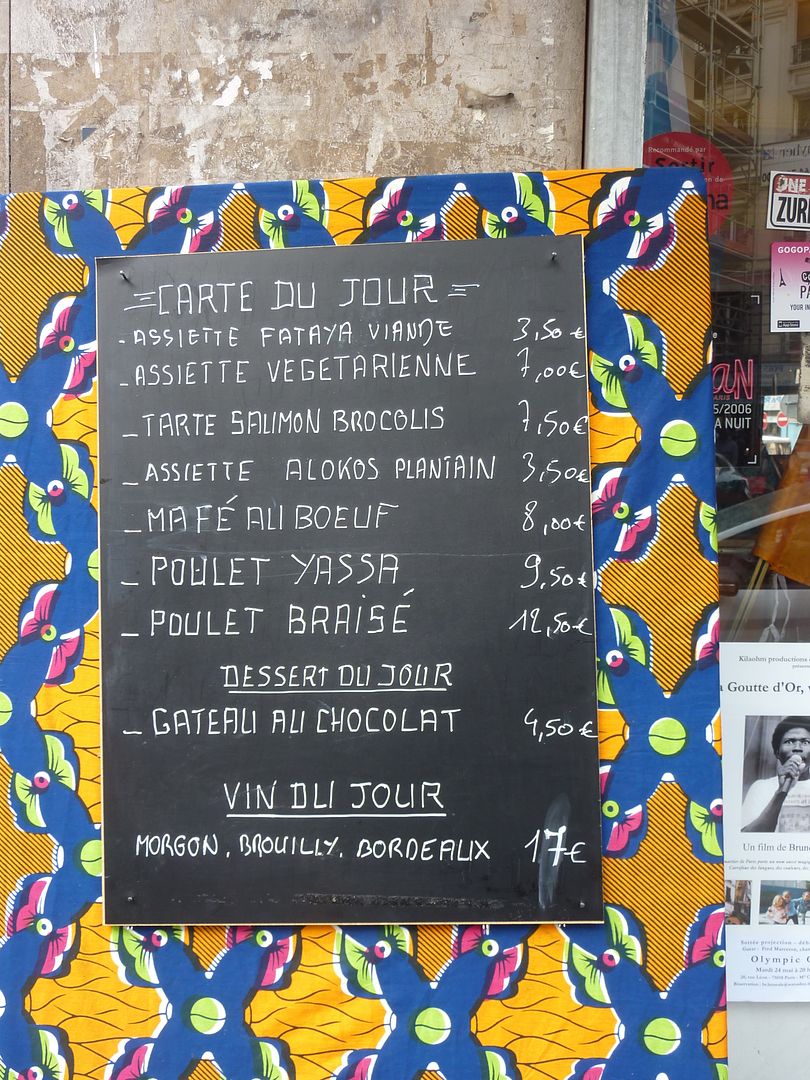
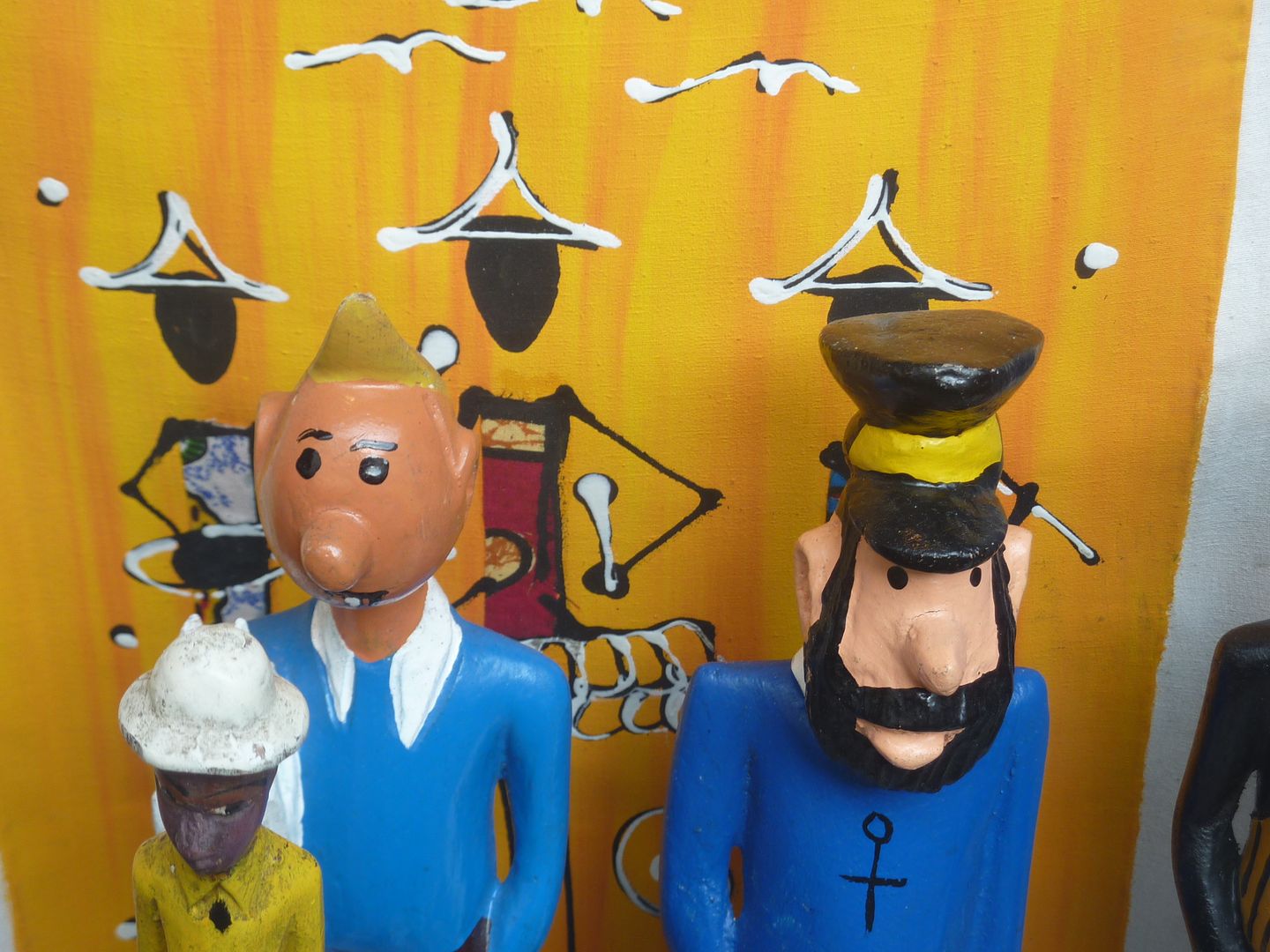
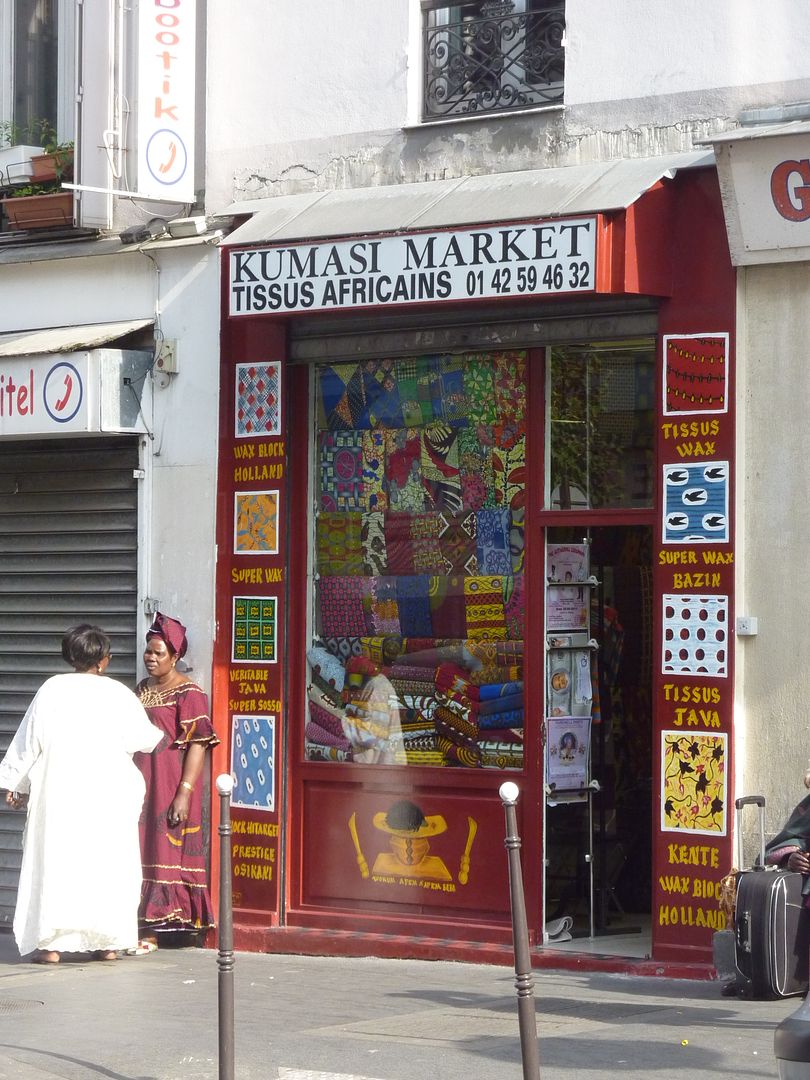

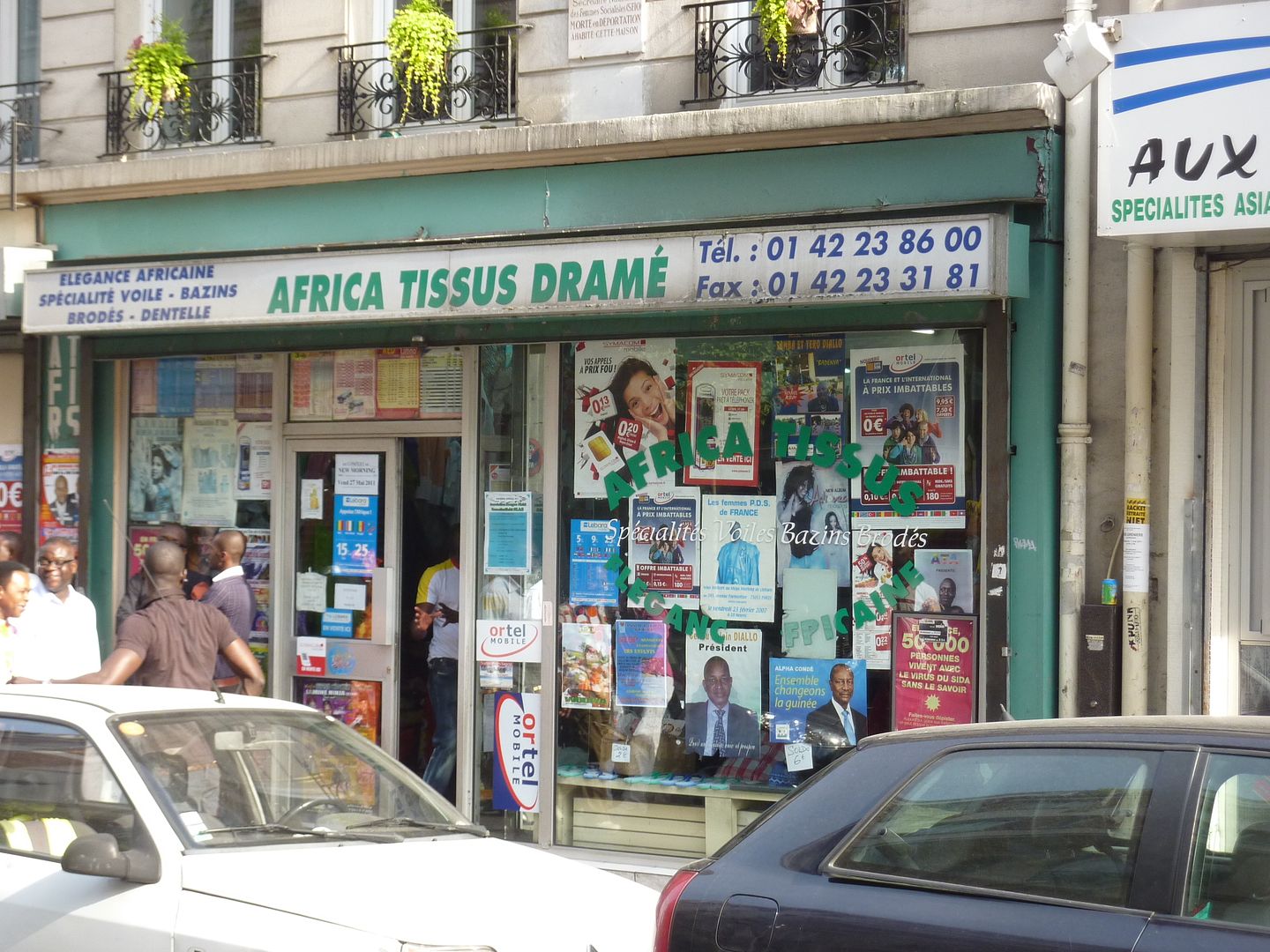
Here comes a little parade! They didn't spend much on the accessories, but who cares?
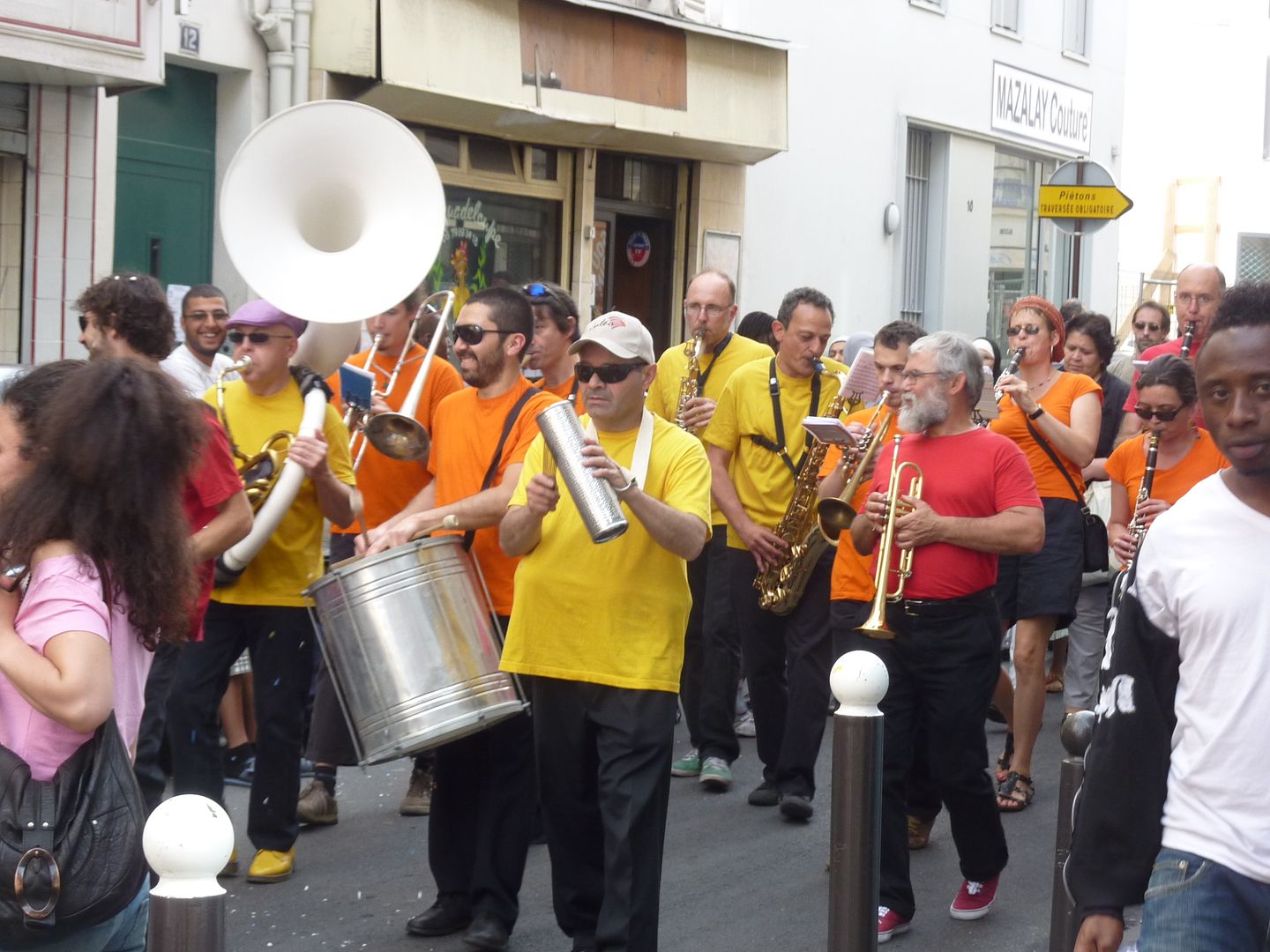

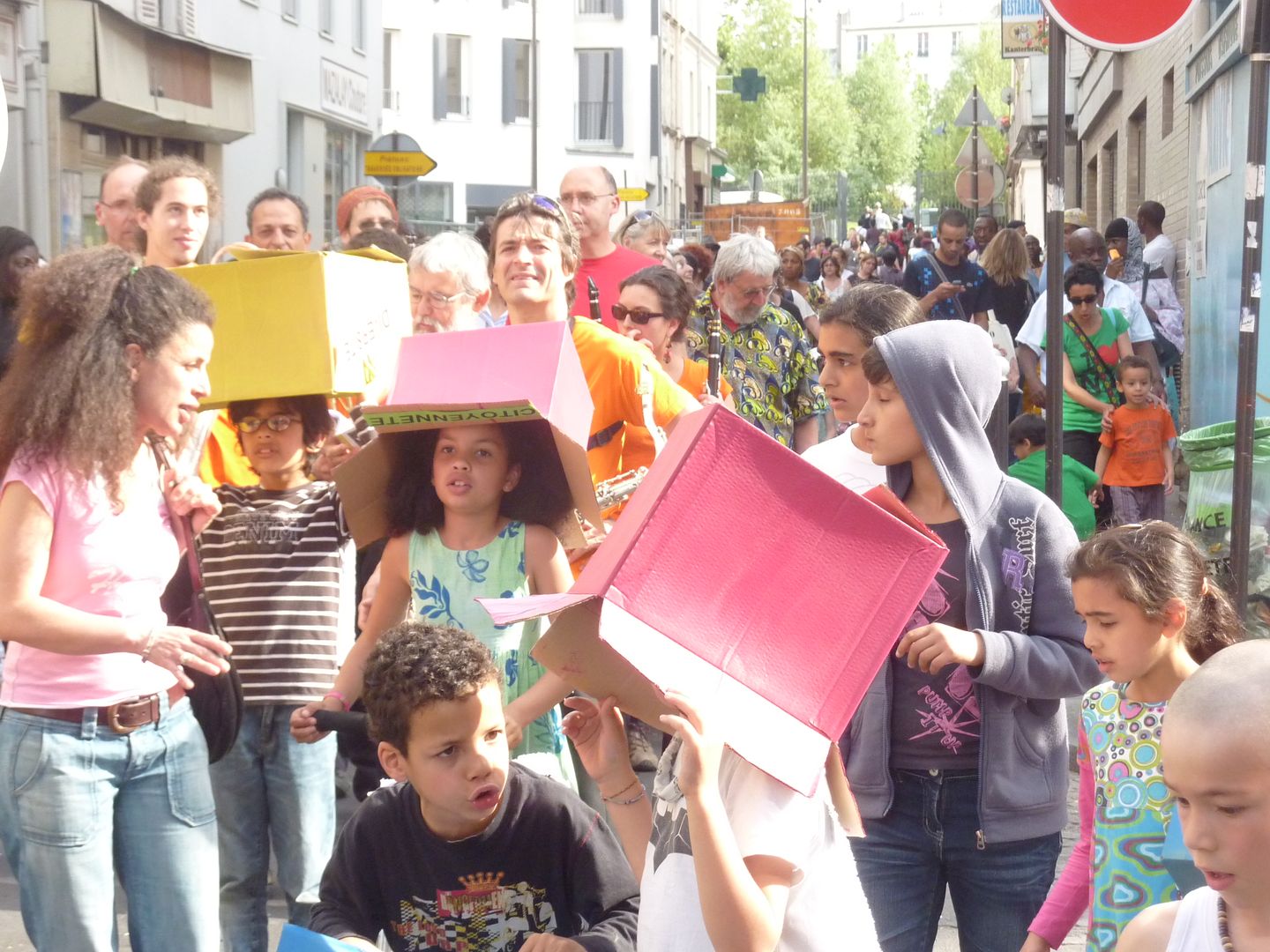
The event is a neighbourhood street meal -- and the street is the location of my mother's nursing home.
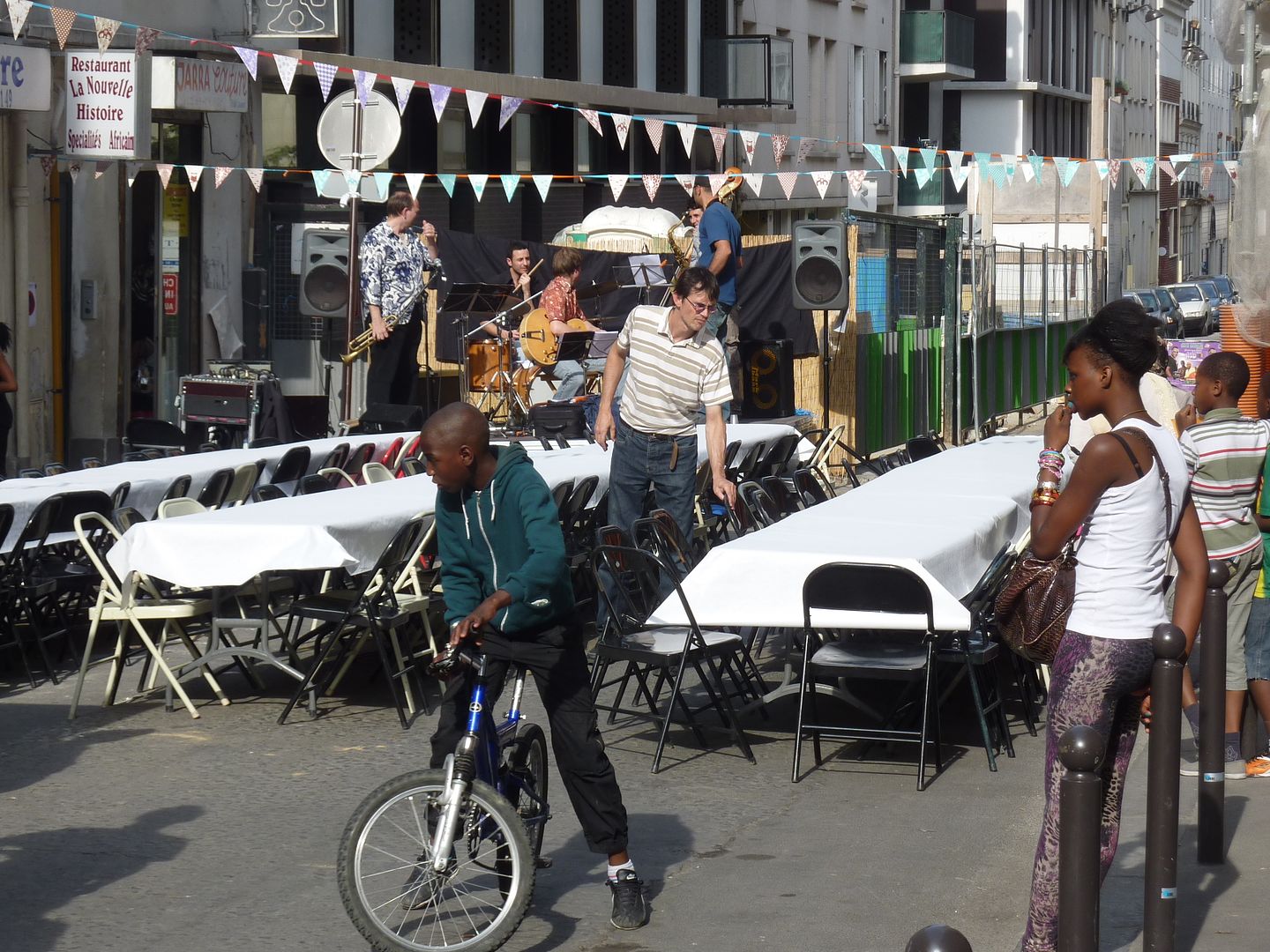

Get a seat fast! The dishes cost 3€ or 5€.
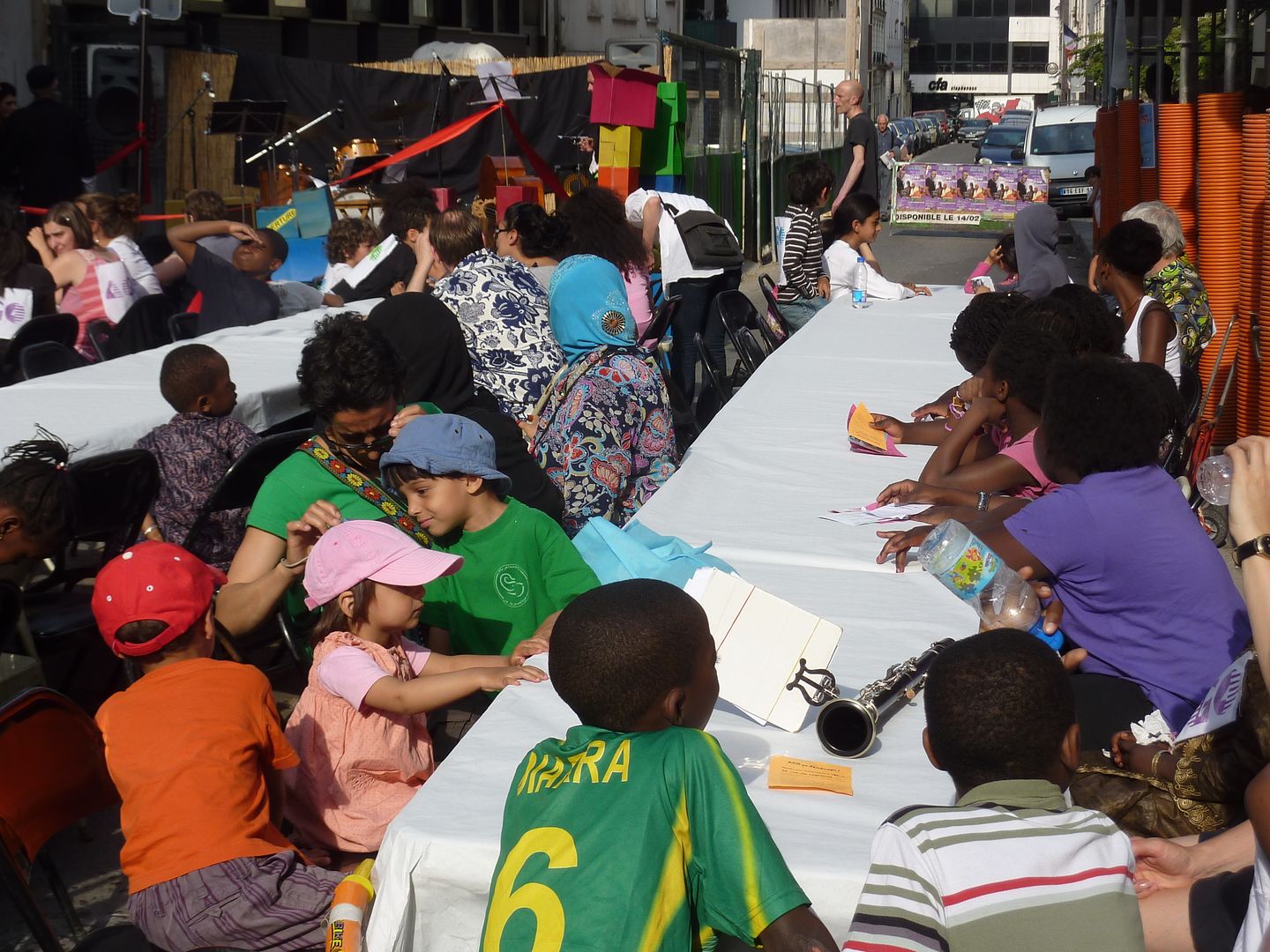
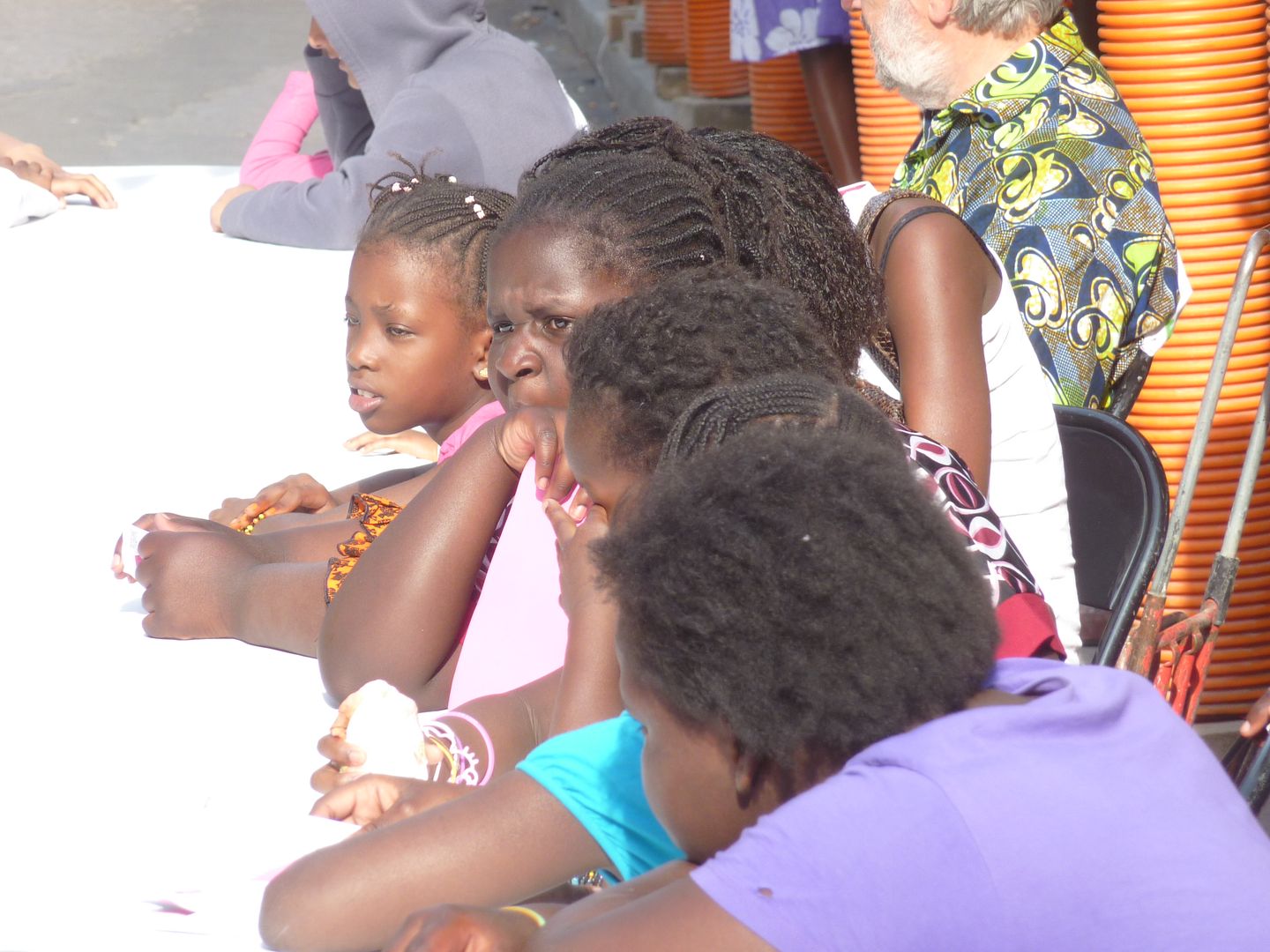





Frankly, I enjoy just about everything in this area.












Here comes a little parade! They didn't spend much on the accessories, but who cares?



The event is a neighbourhood street meal -- and the street is the location of my mother's nursing home.


Get a seat fast! The dishes cost 3€ or 5€.



Bring on the food! Unfortunately, I did not stay around to see it. But I will try to add some more photos to this thread in the future, because the area absolutely deserves it.
If anybody wants to see more of the Goutte d'Or/Château Rouge area, I made a little cultural report last year when I unexpectedly encountered the Emperor of Château Rouge.





 Let the riot begin! LOL -
Let the riot begin! LOL -  hahahha
hahahha